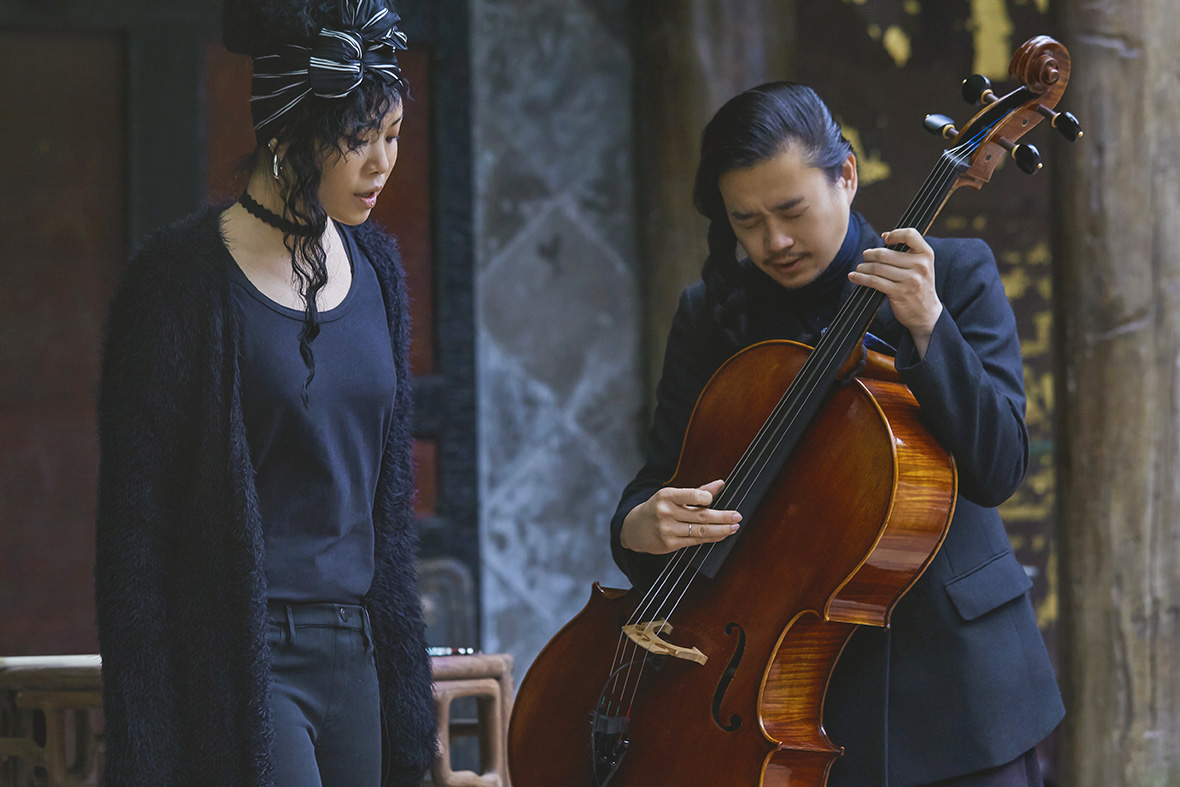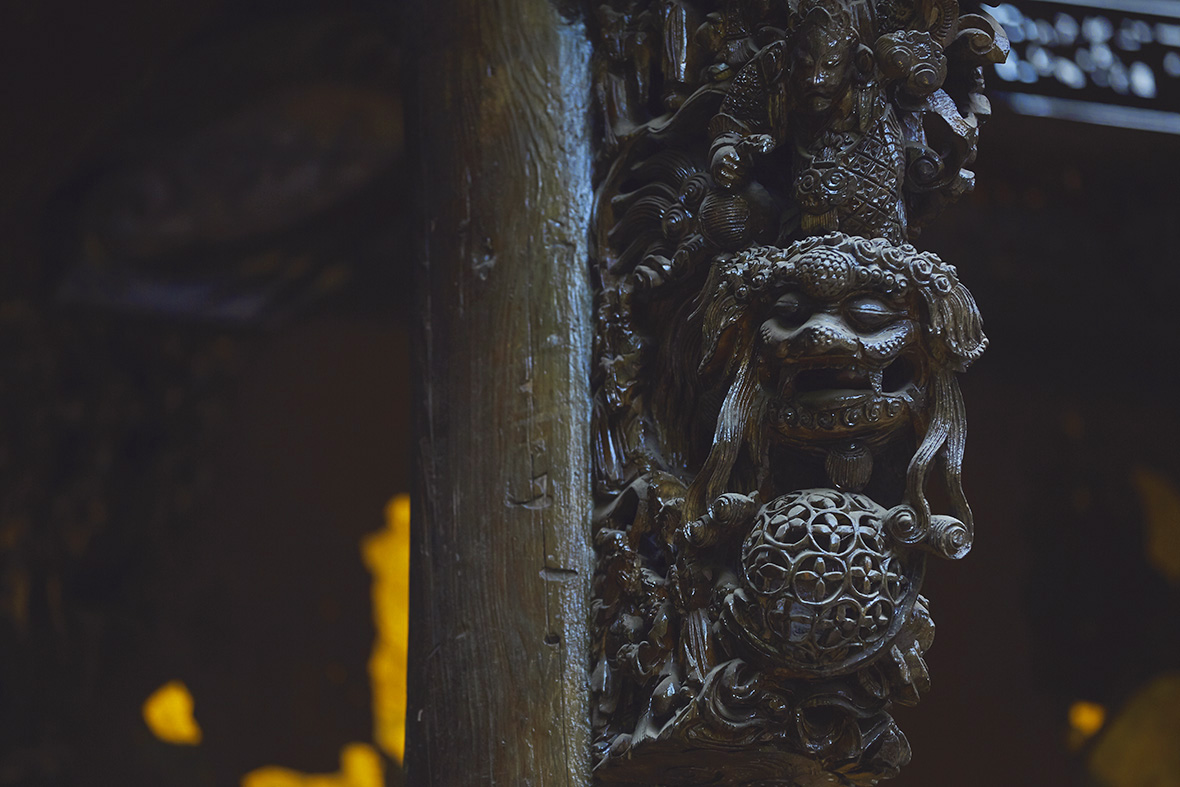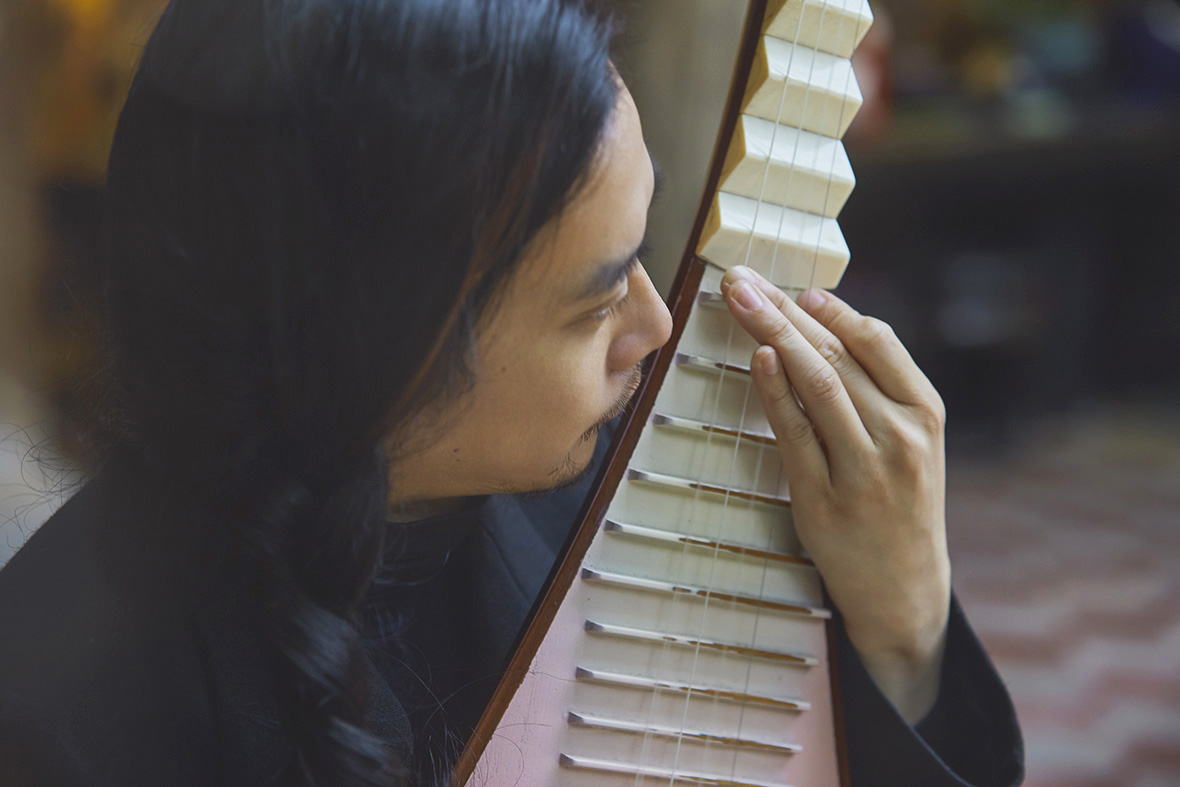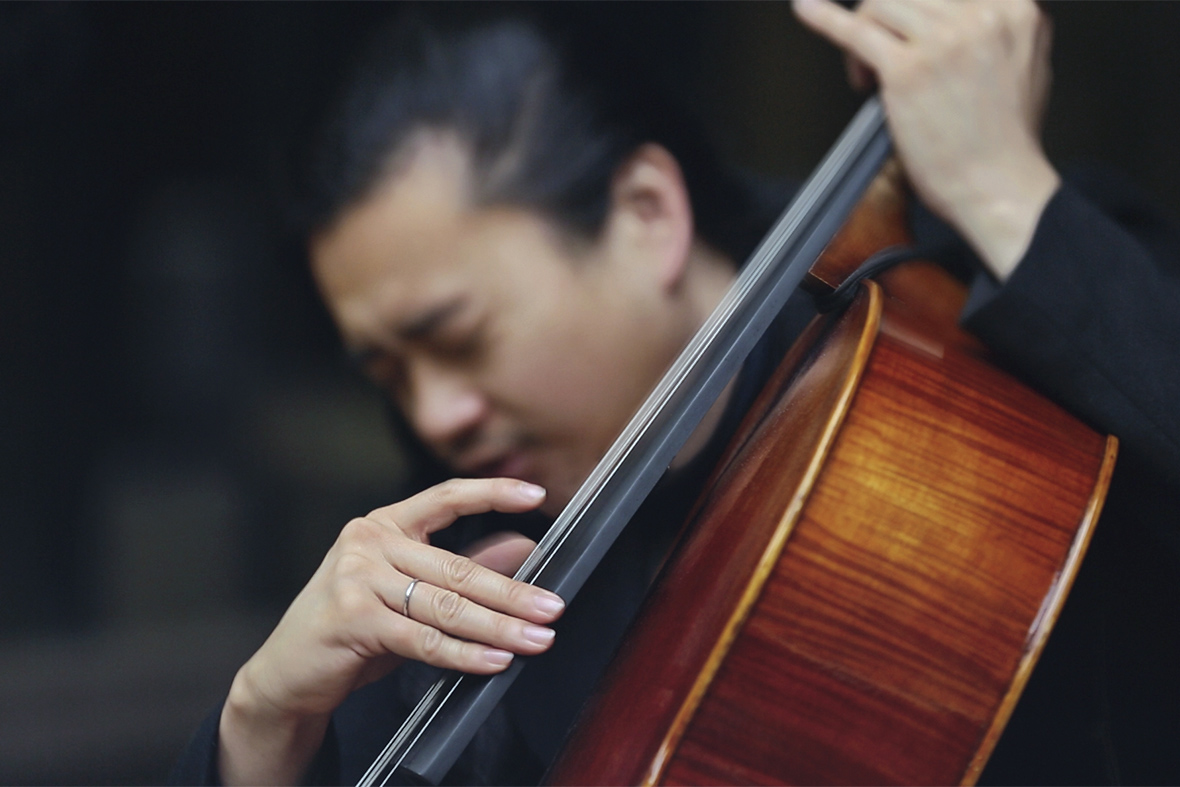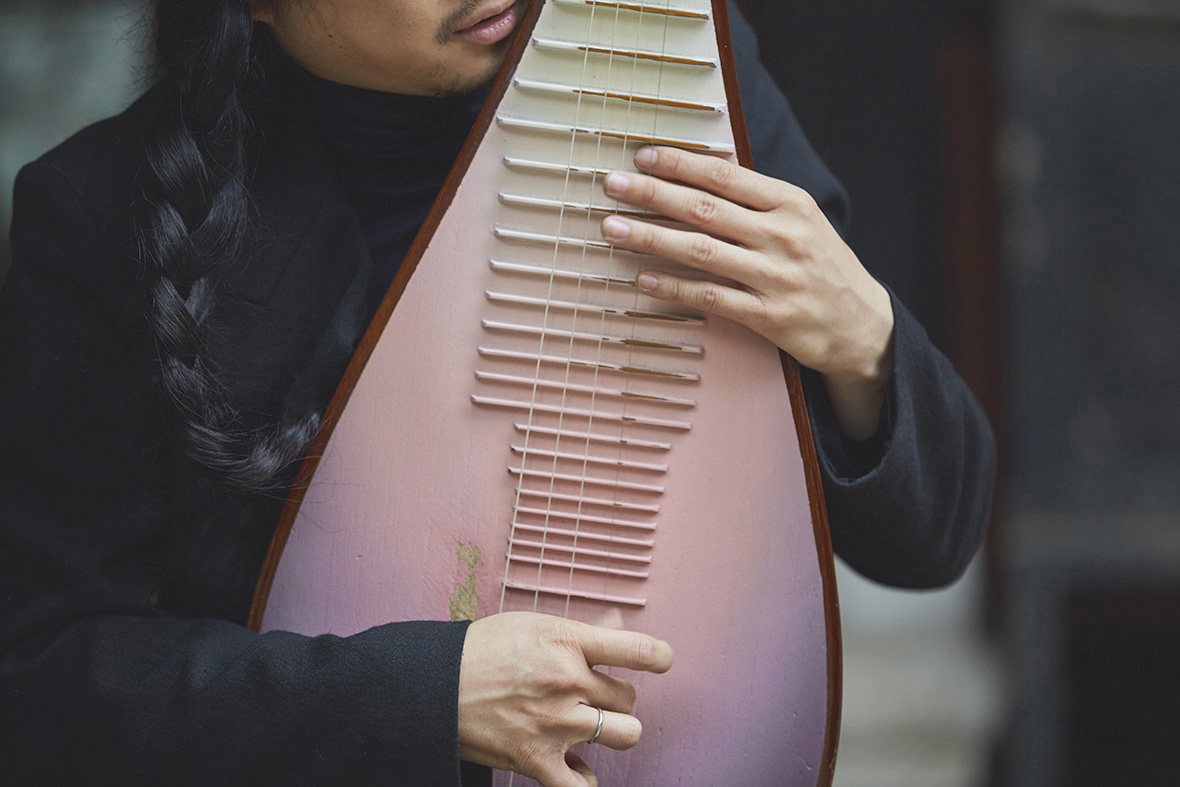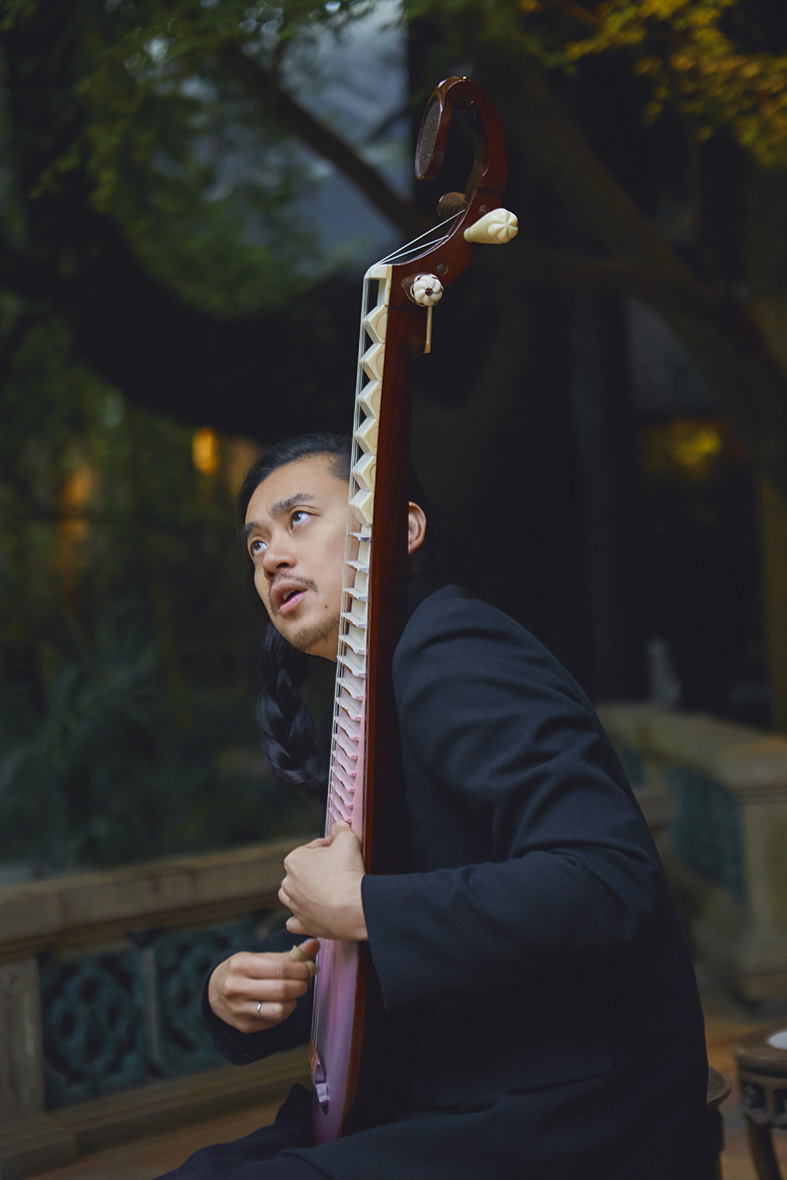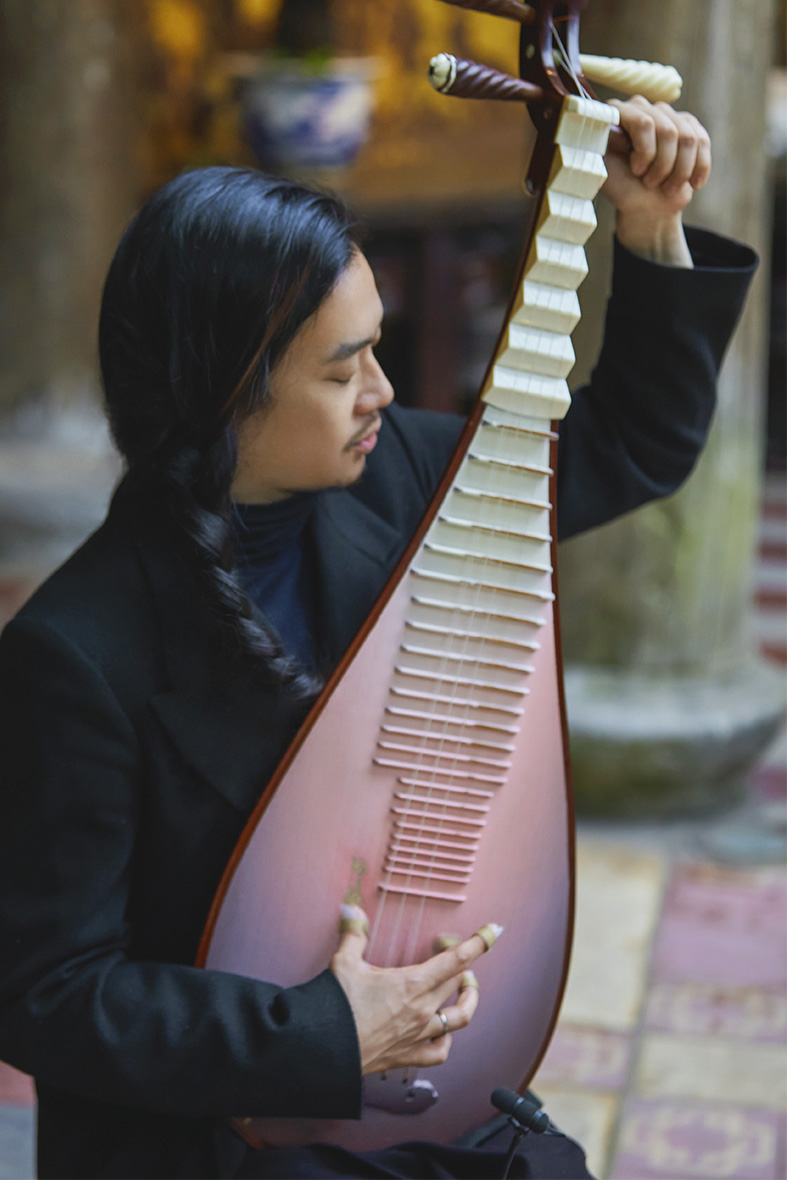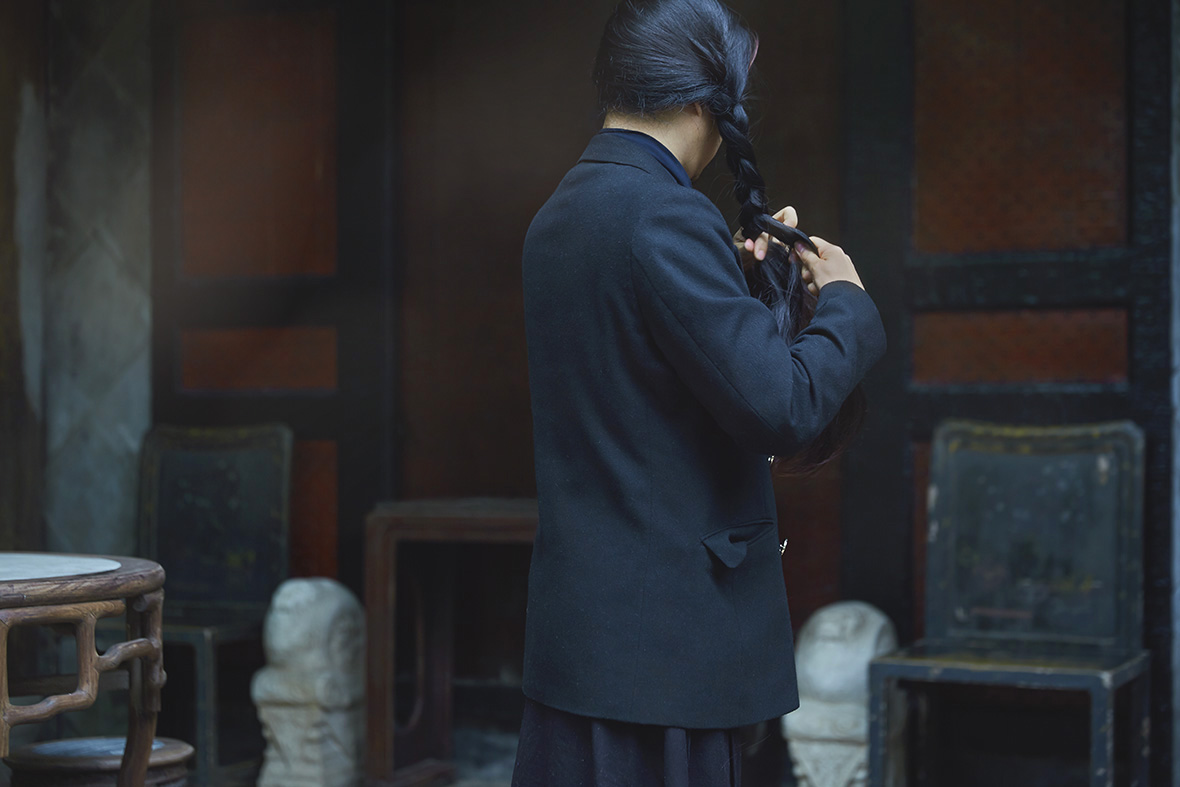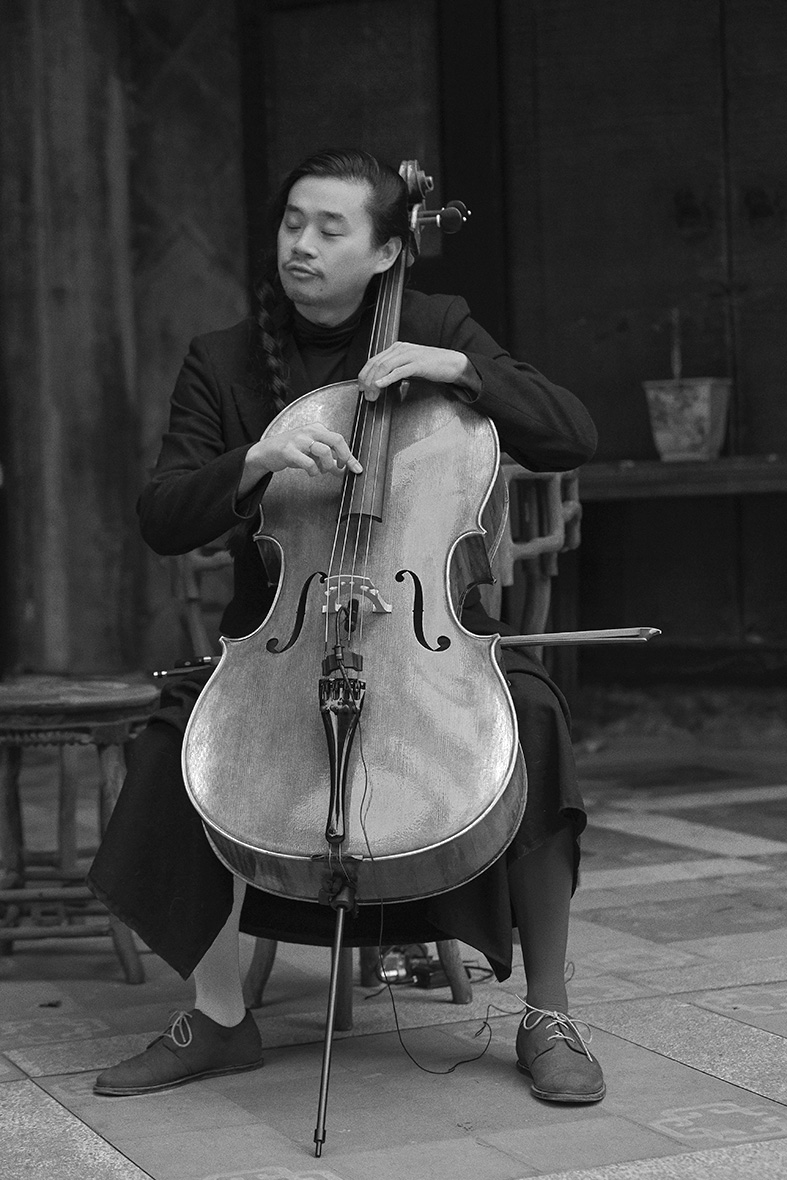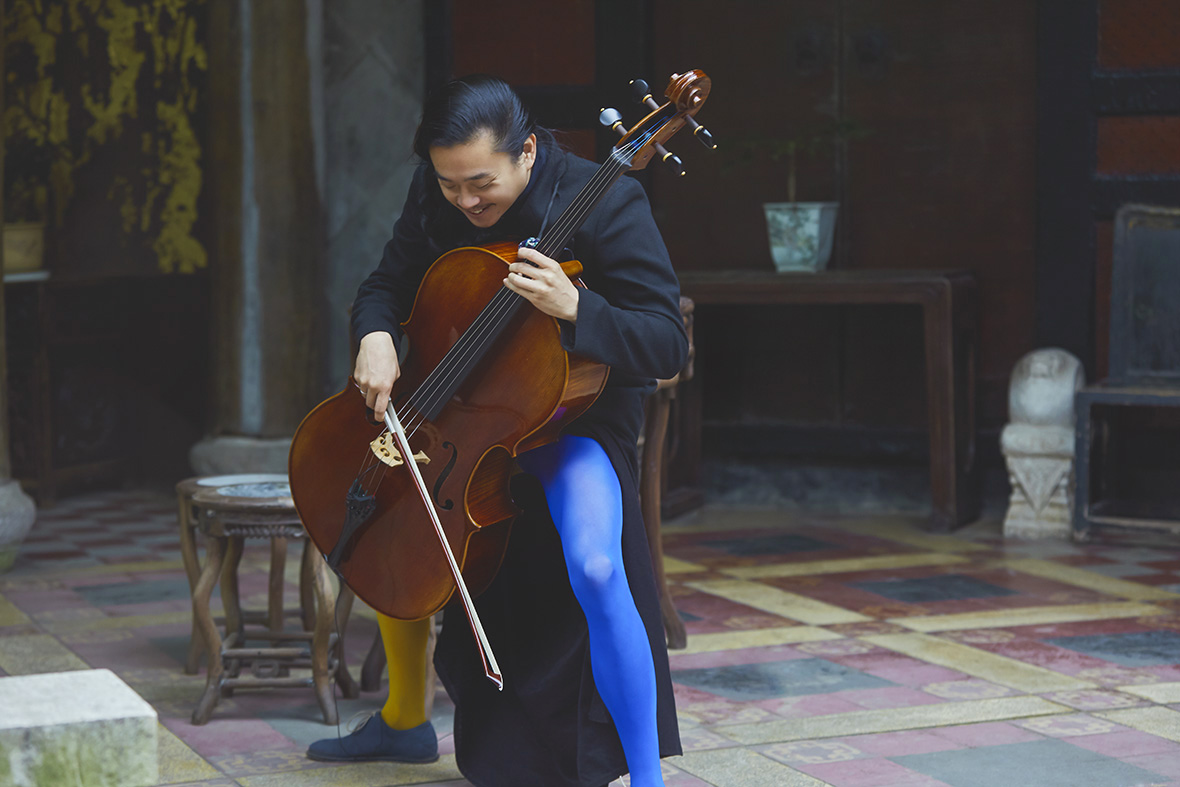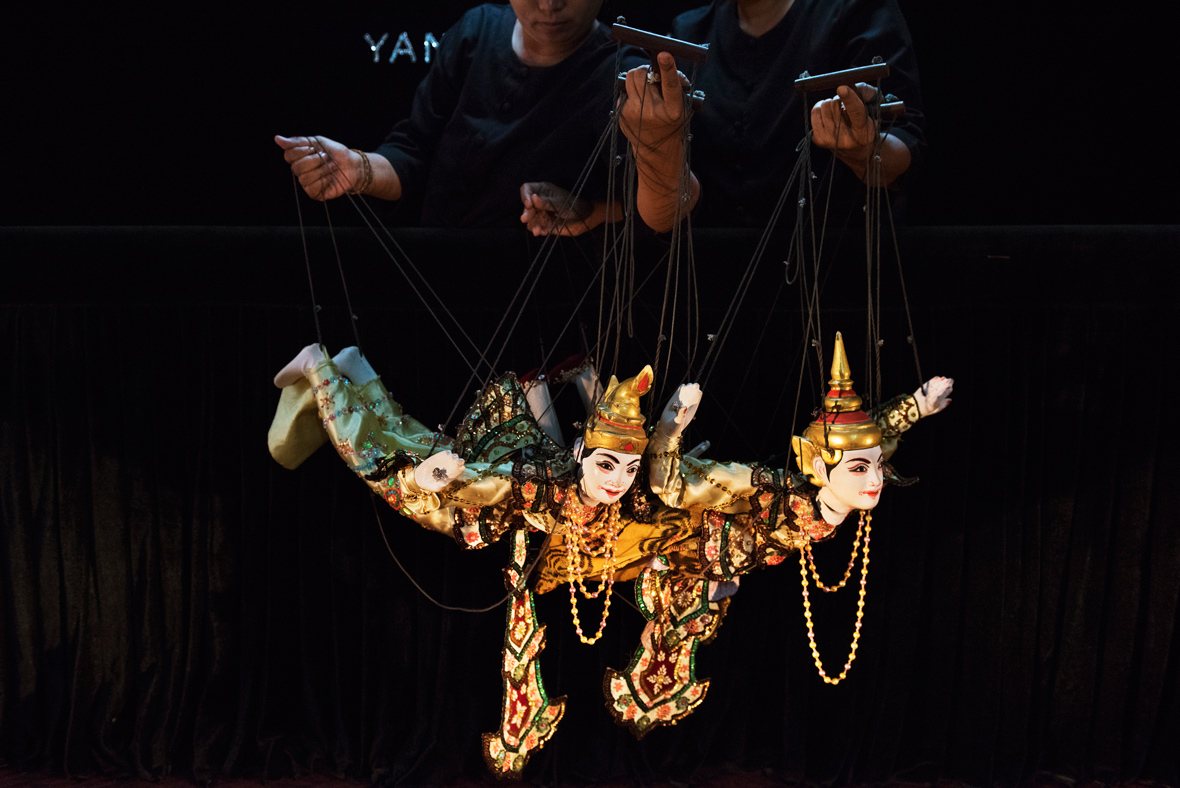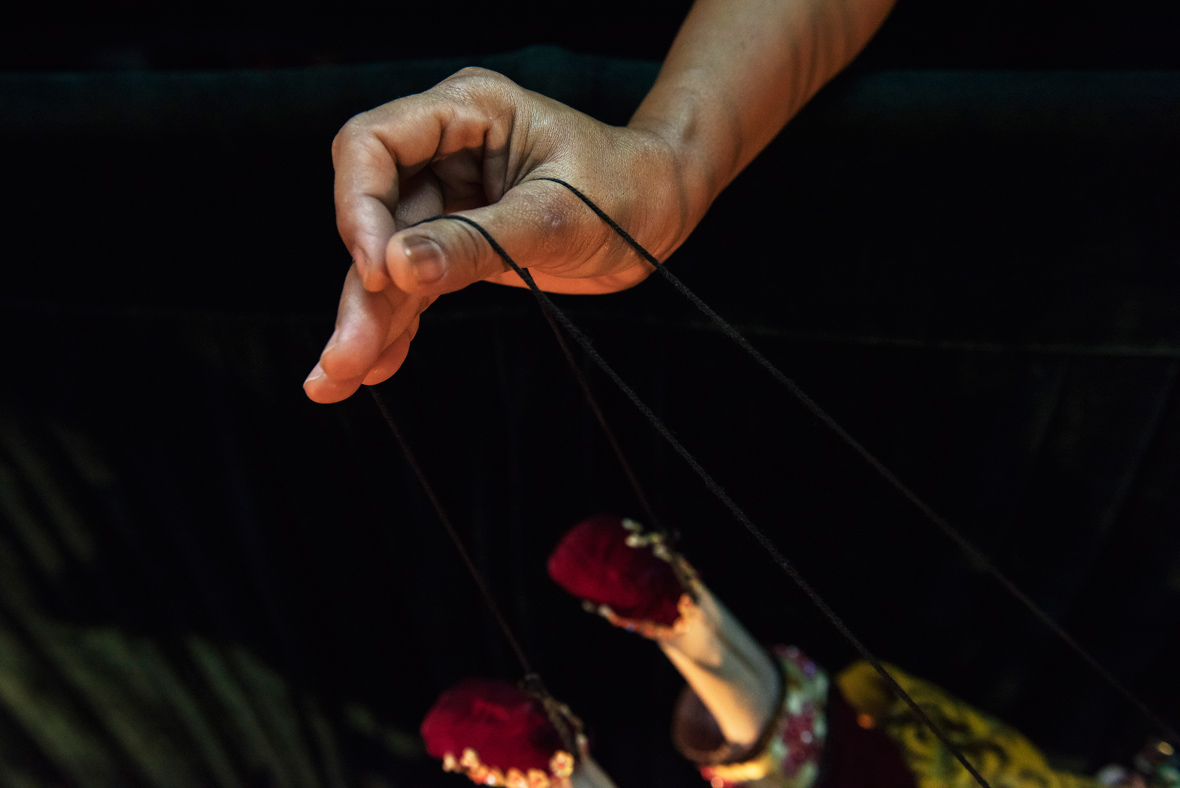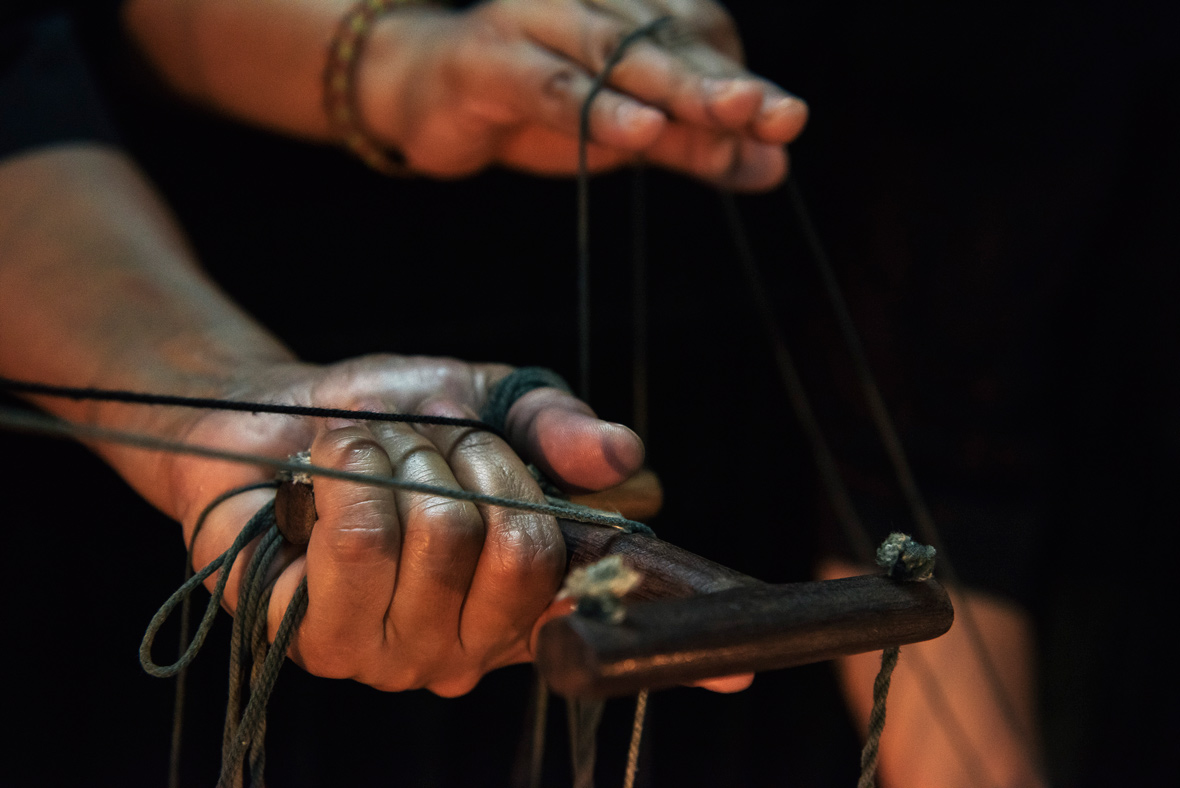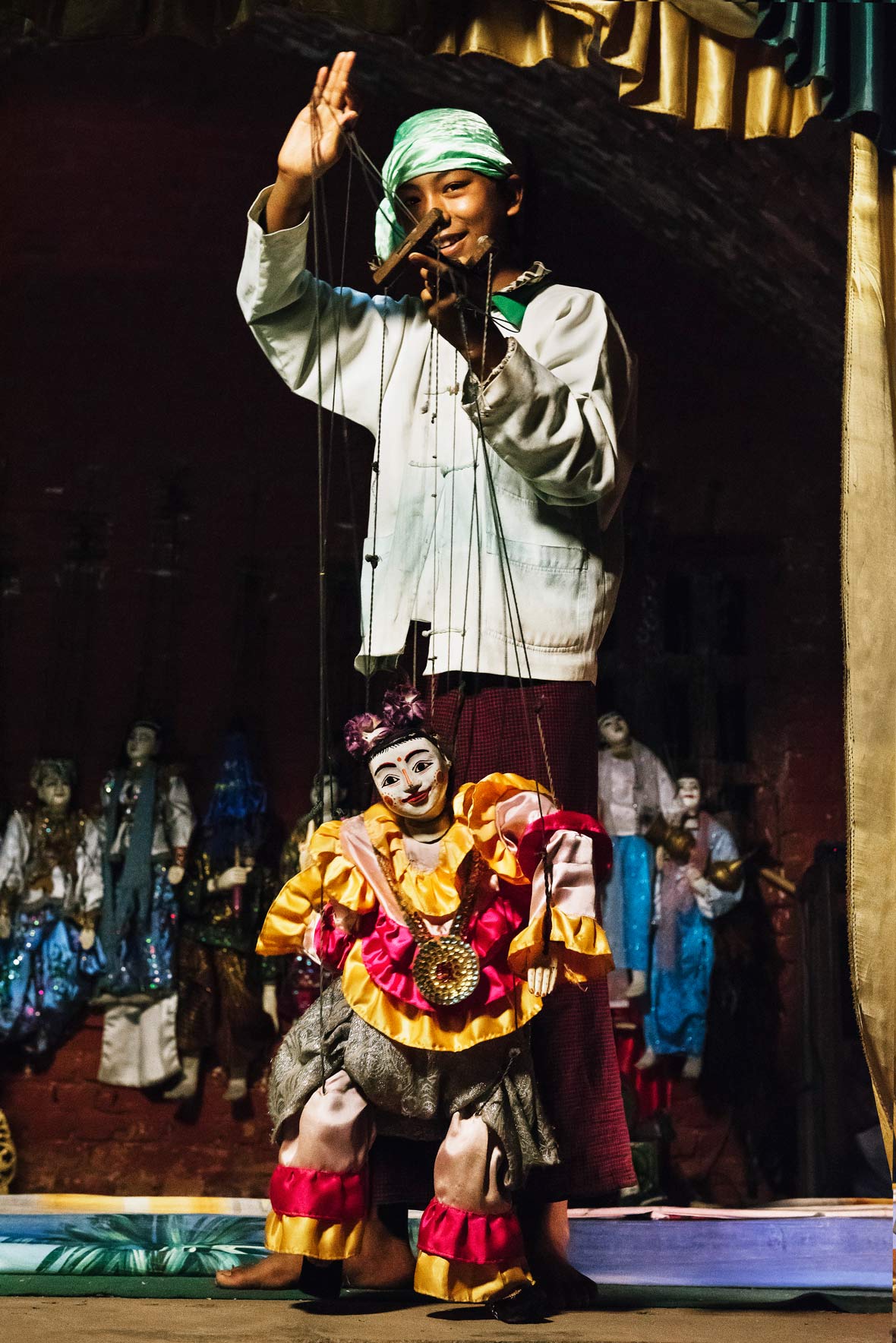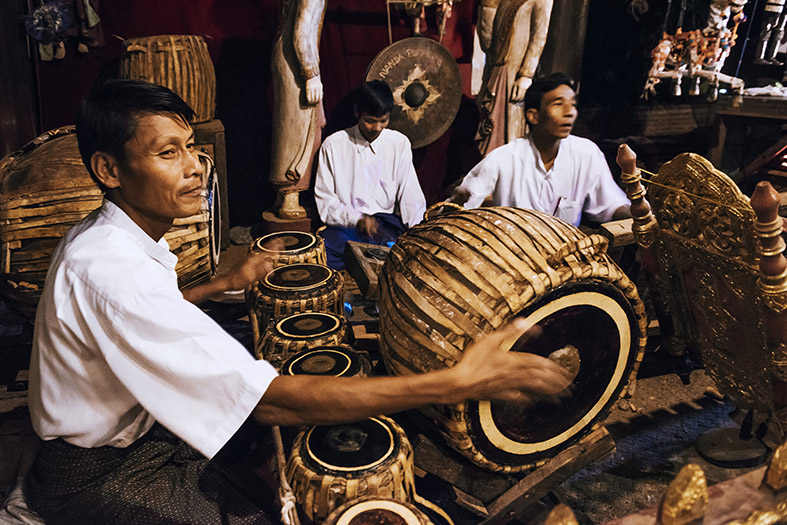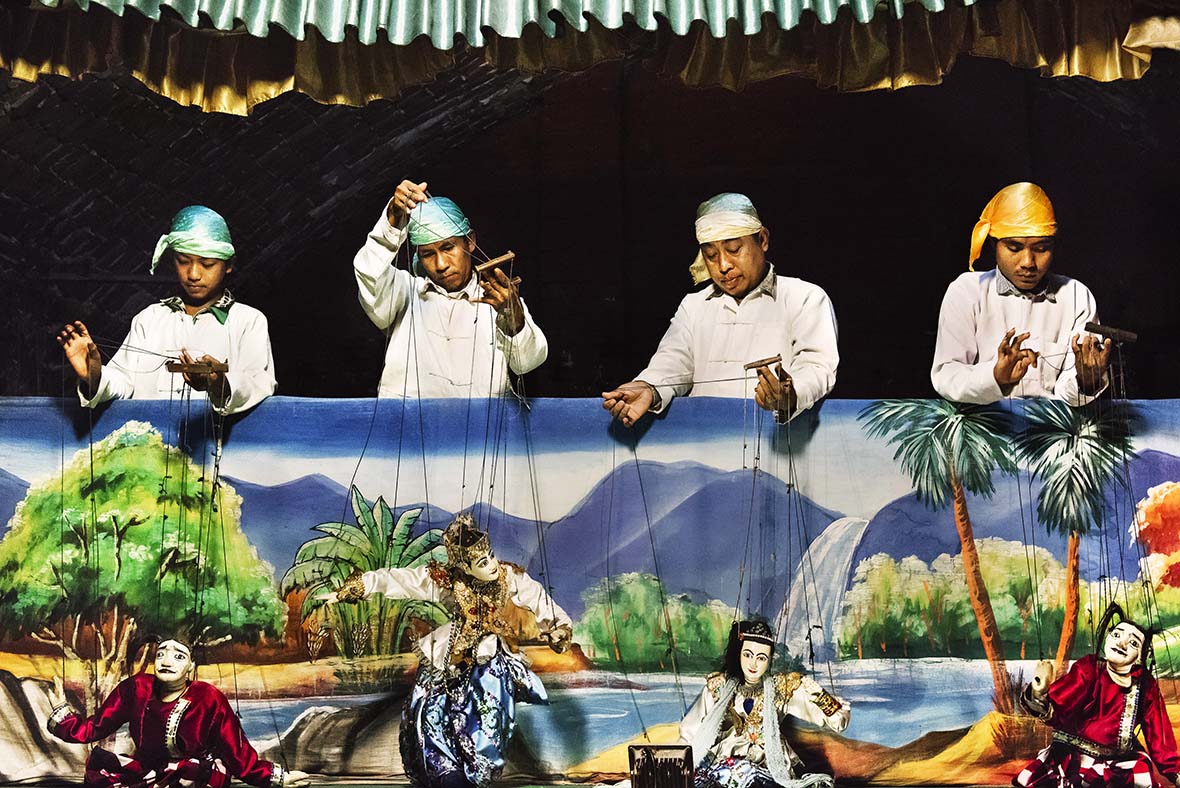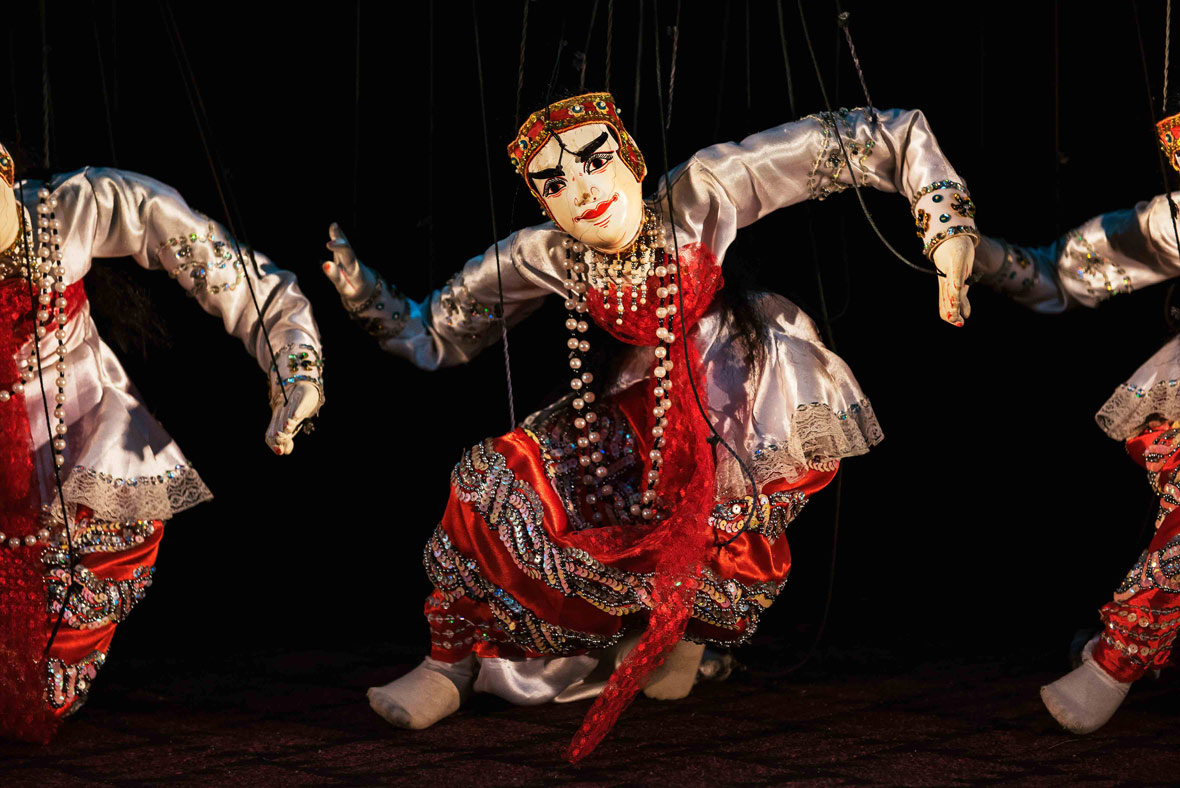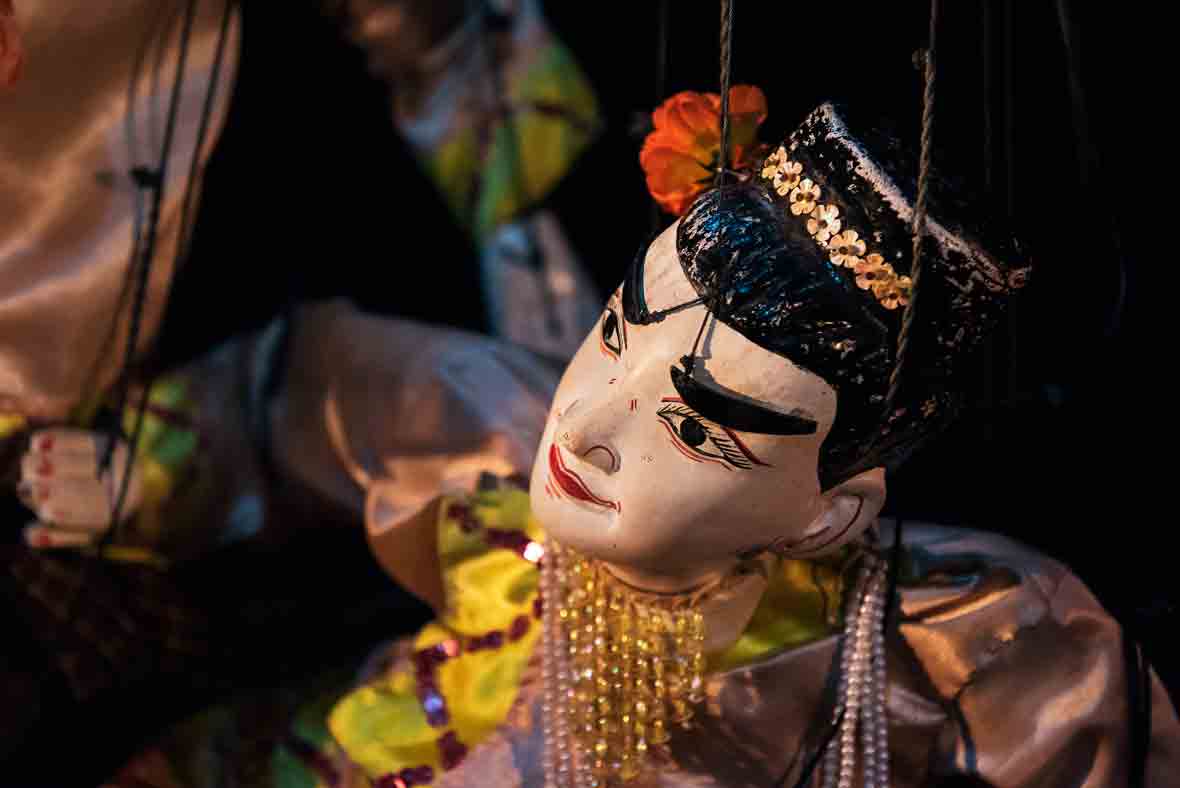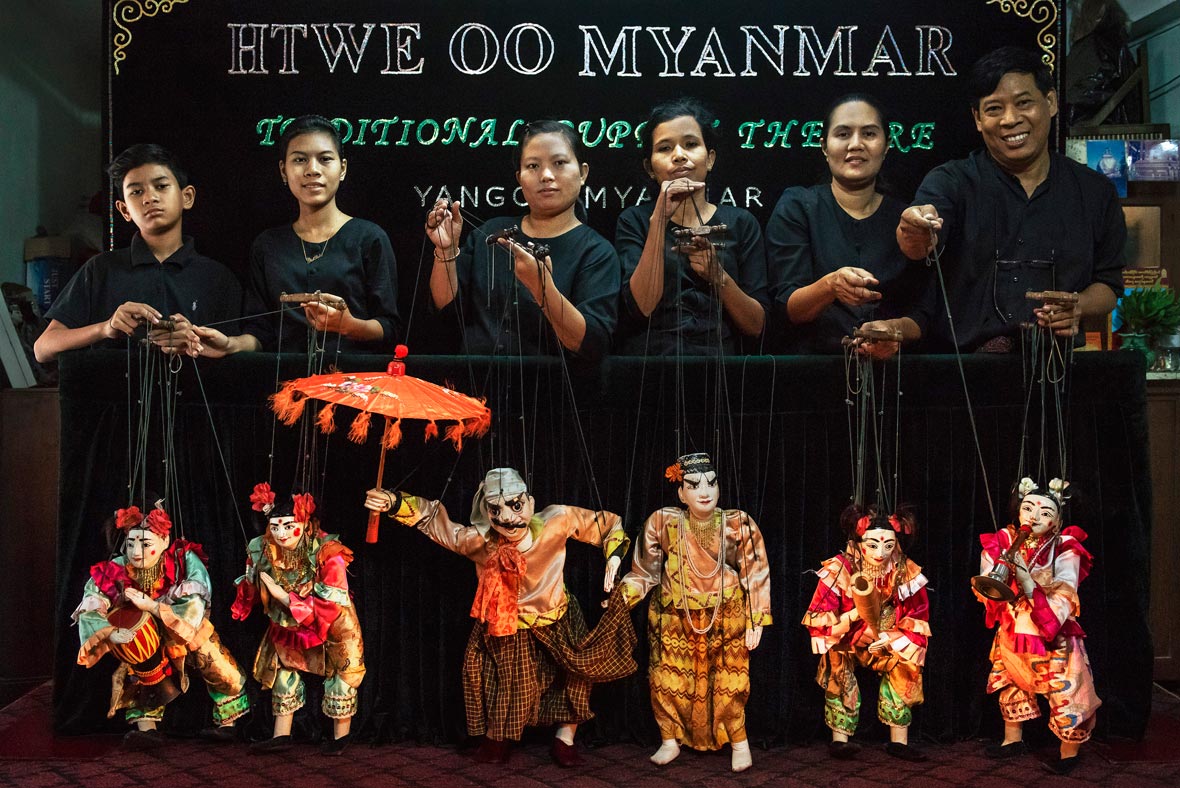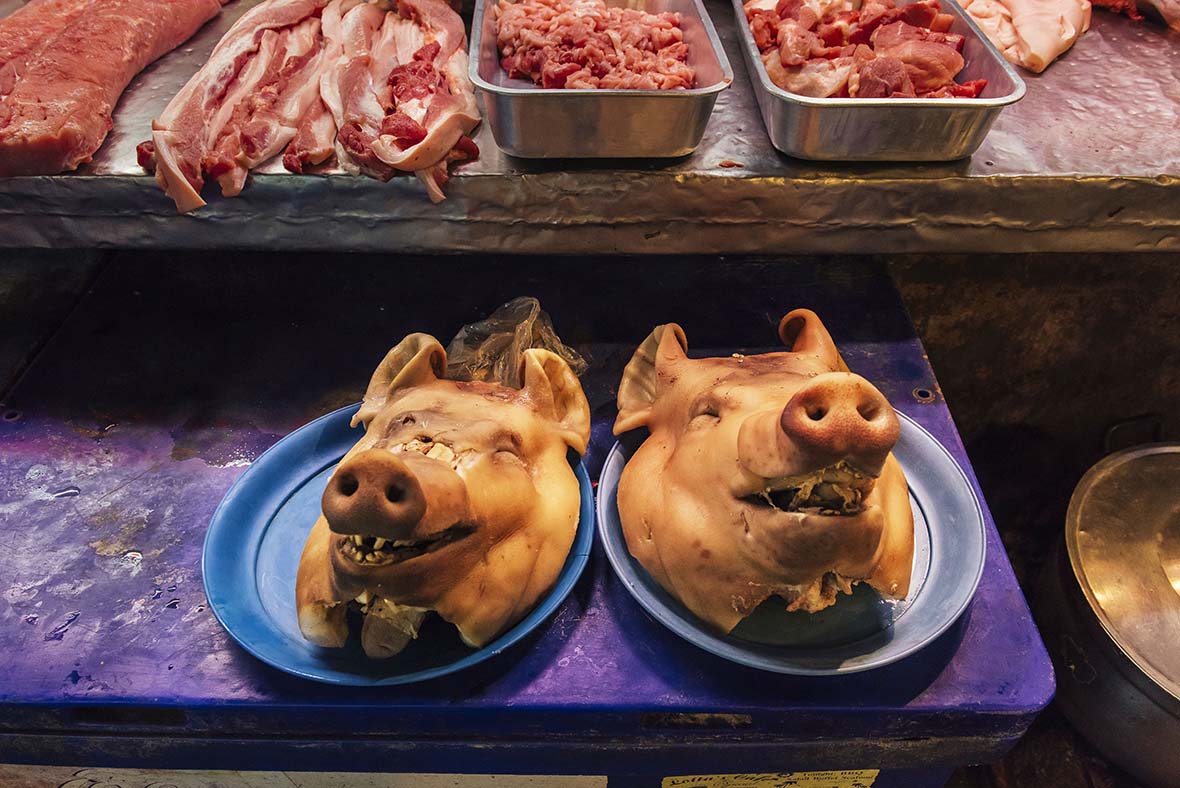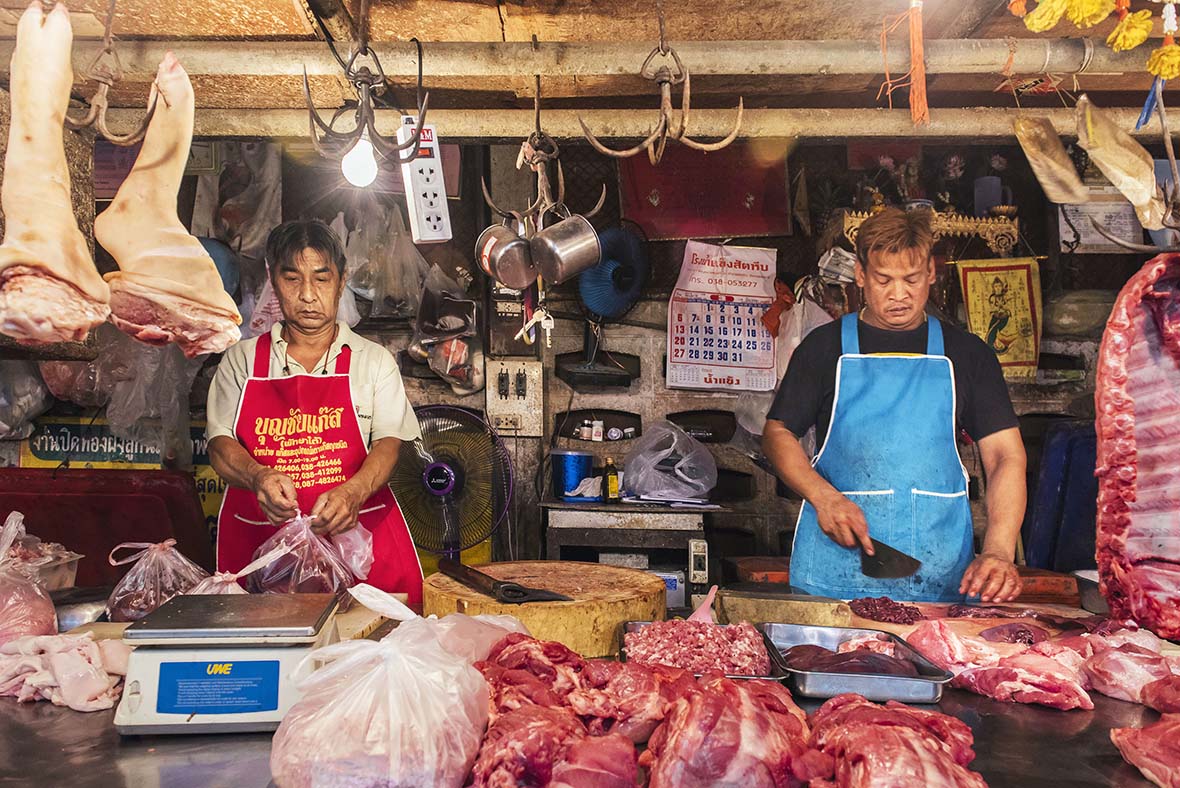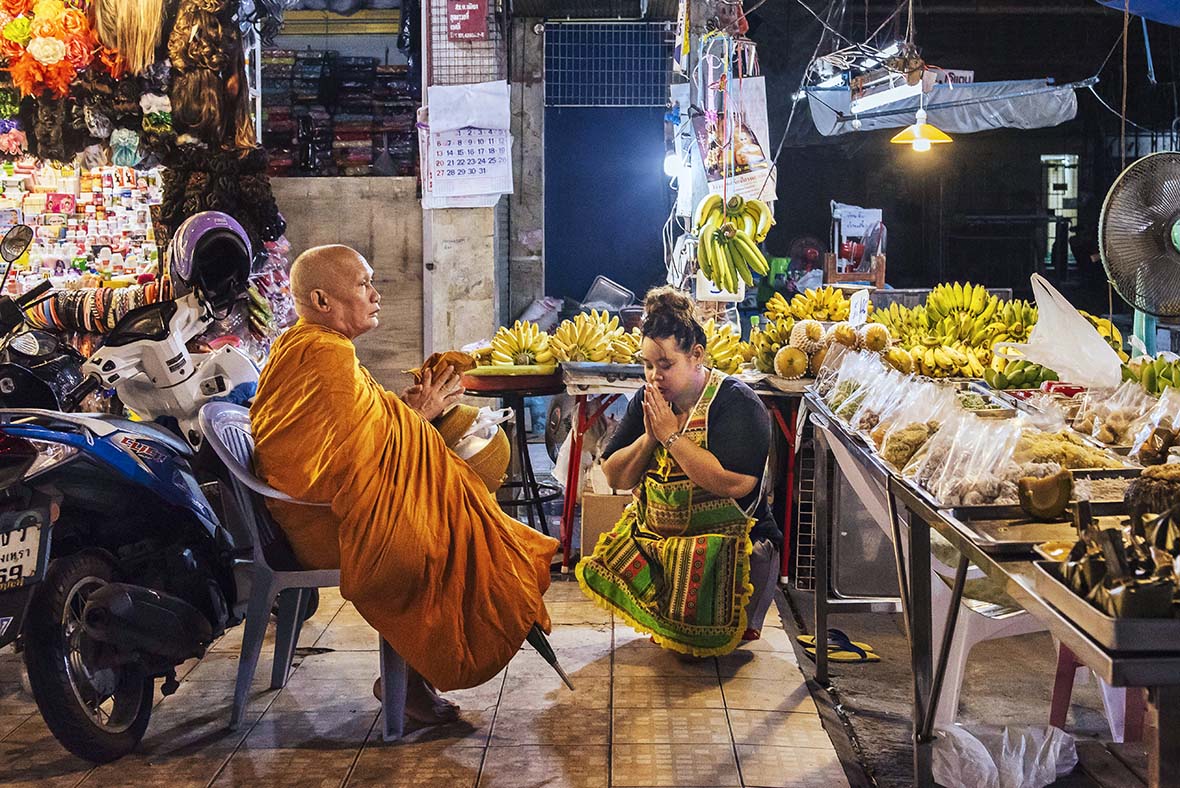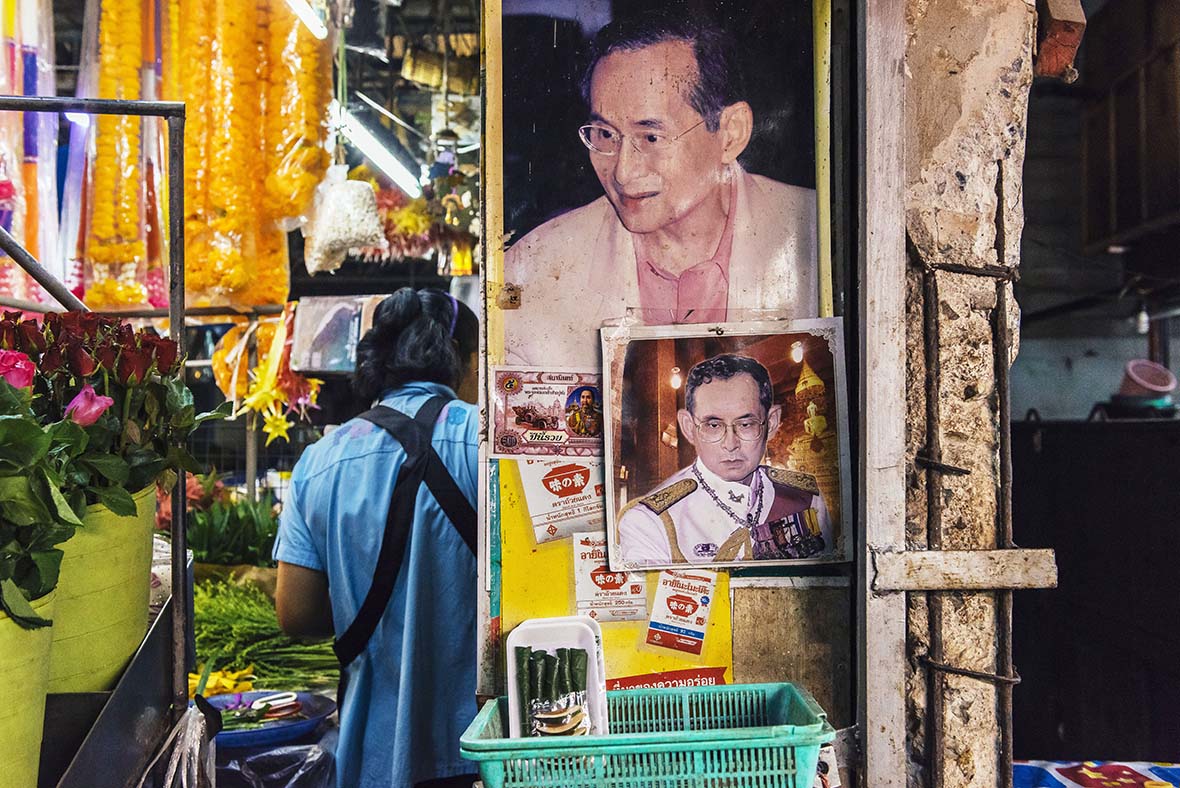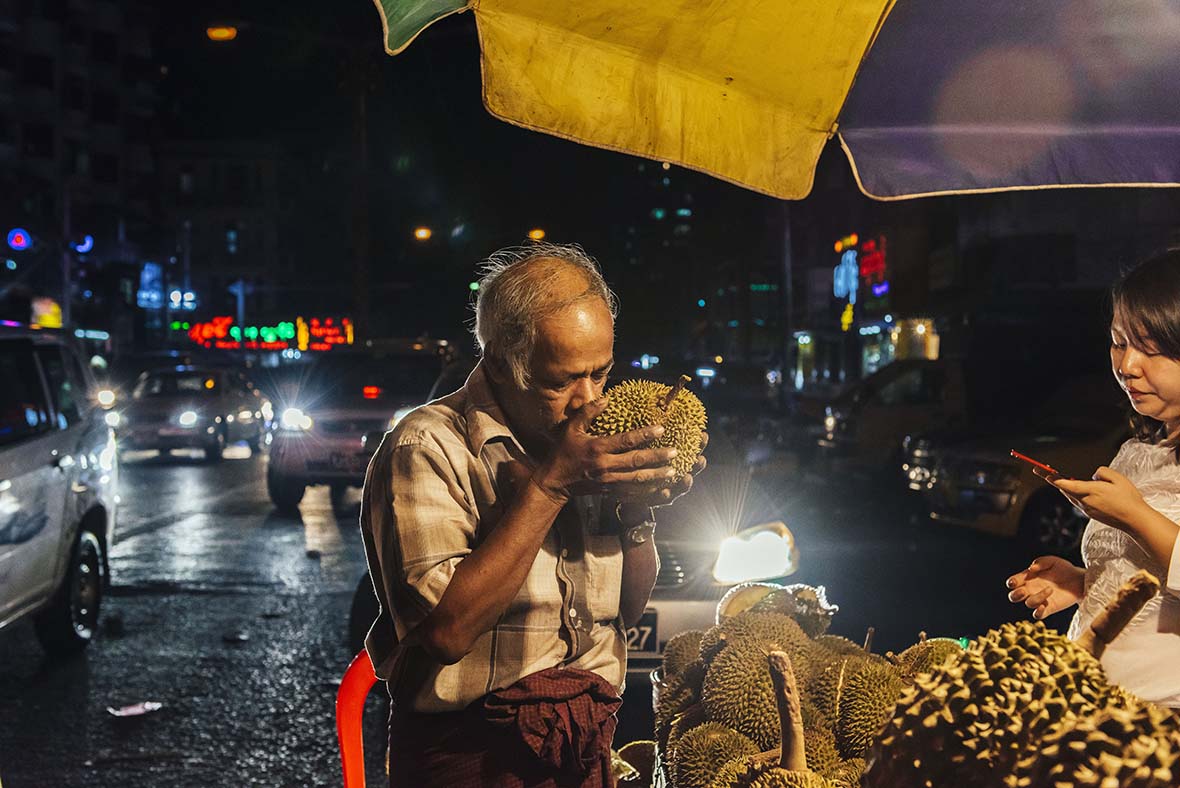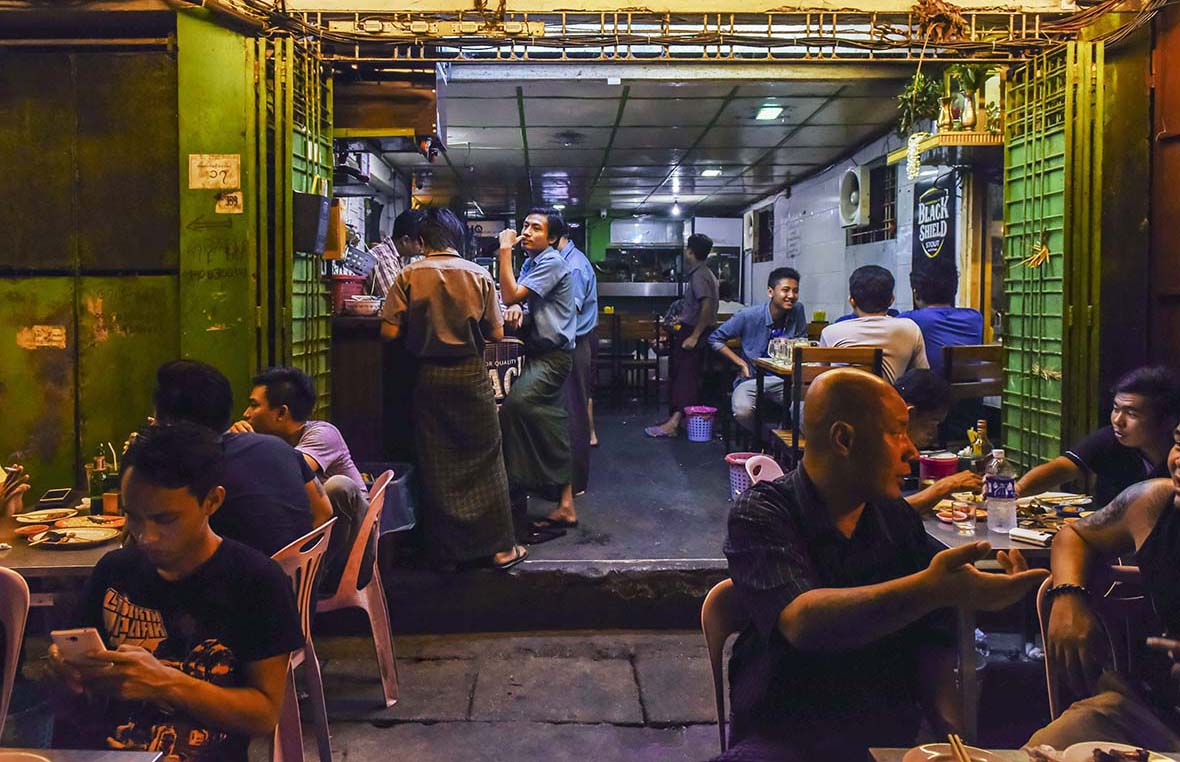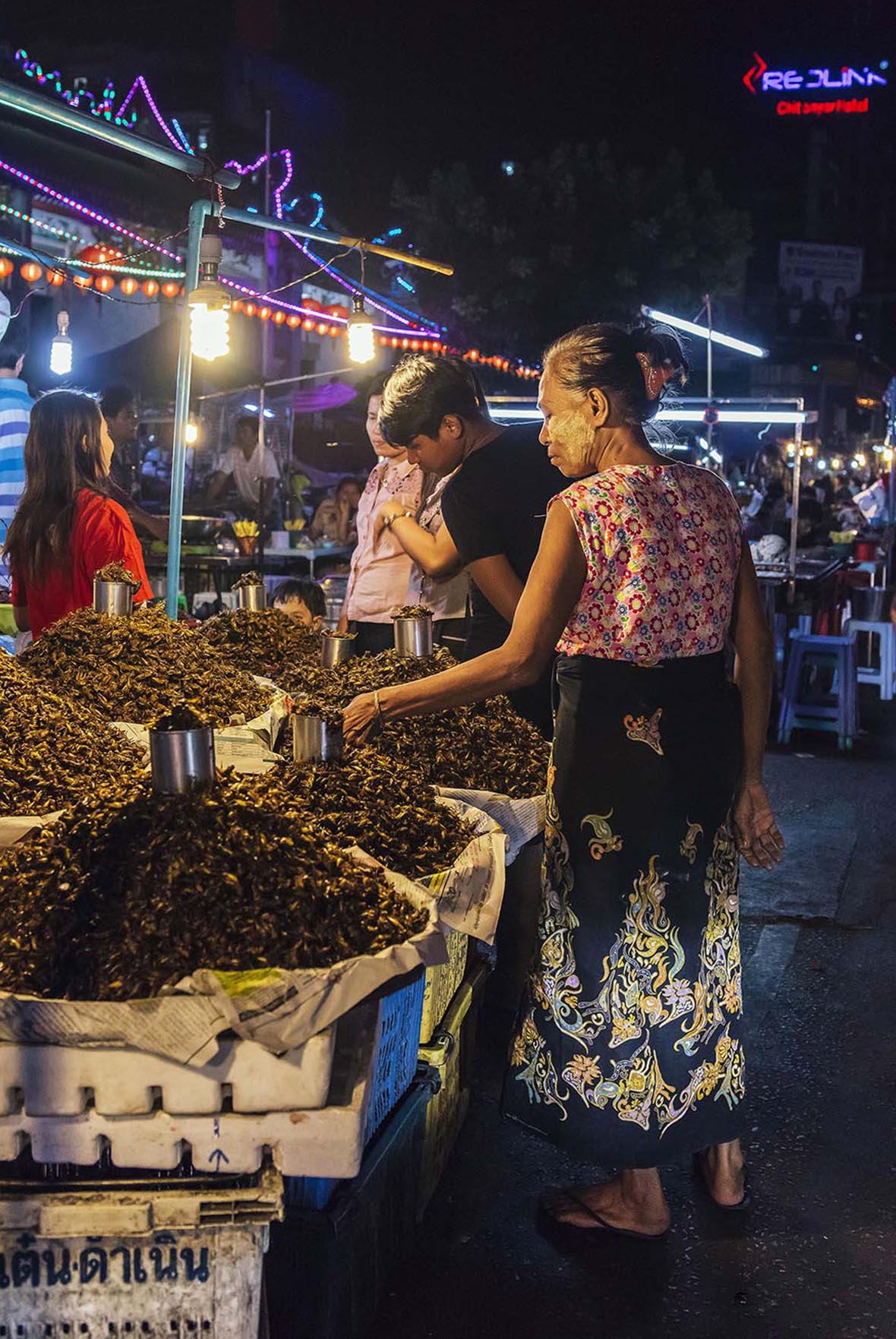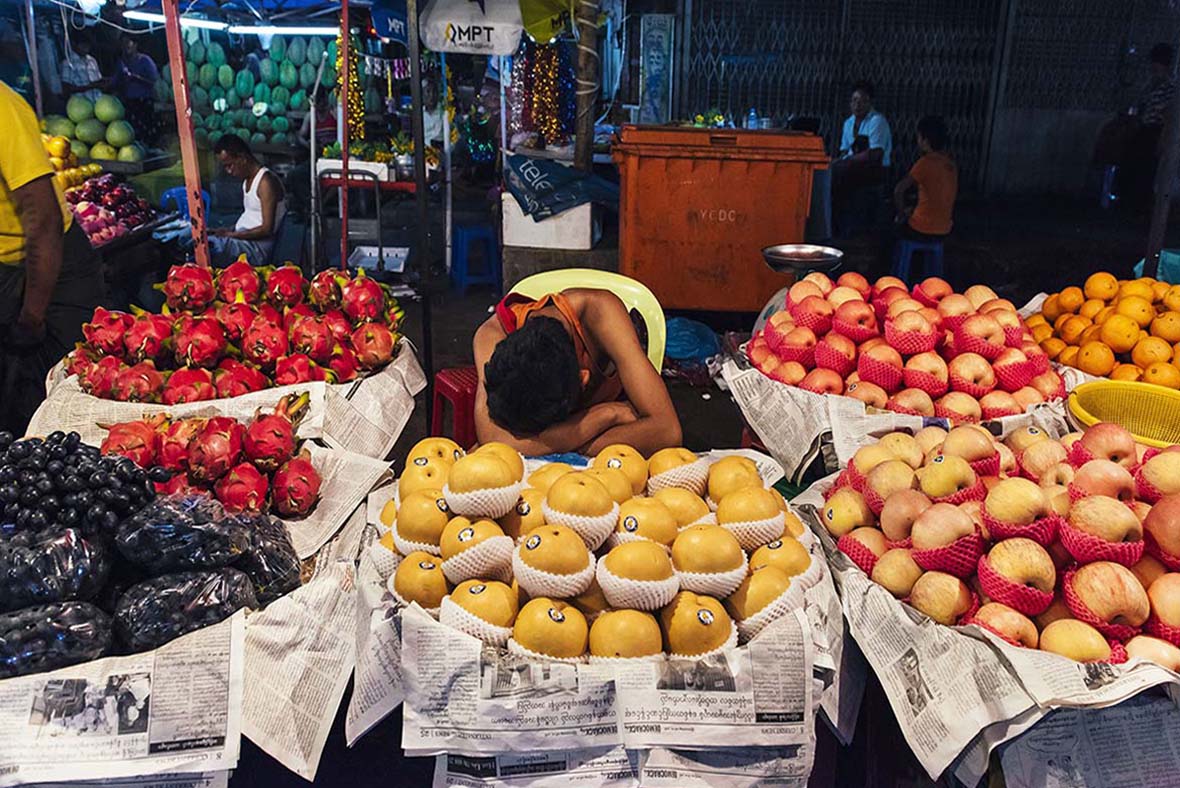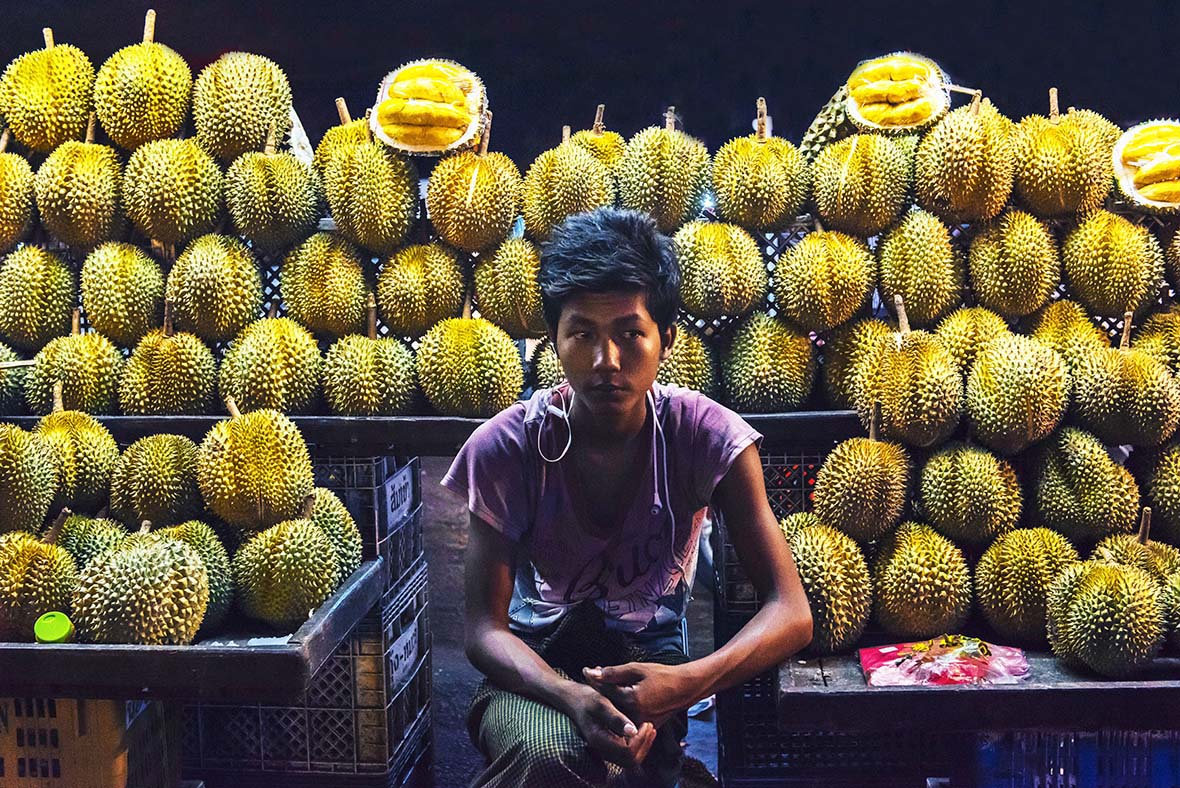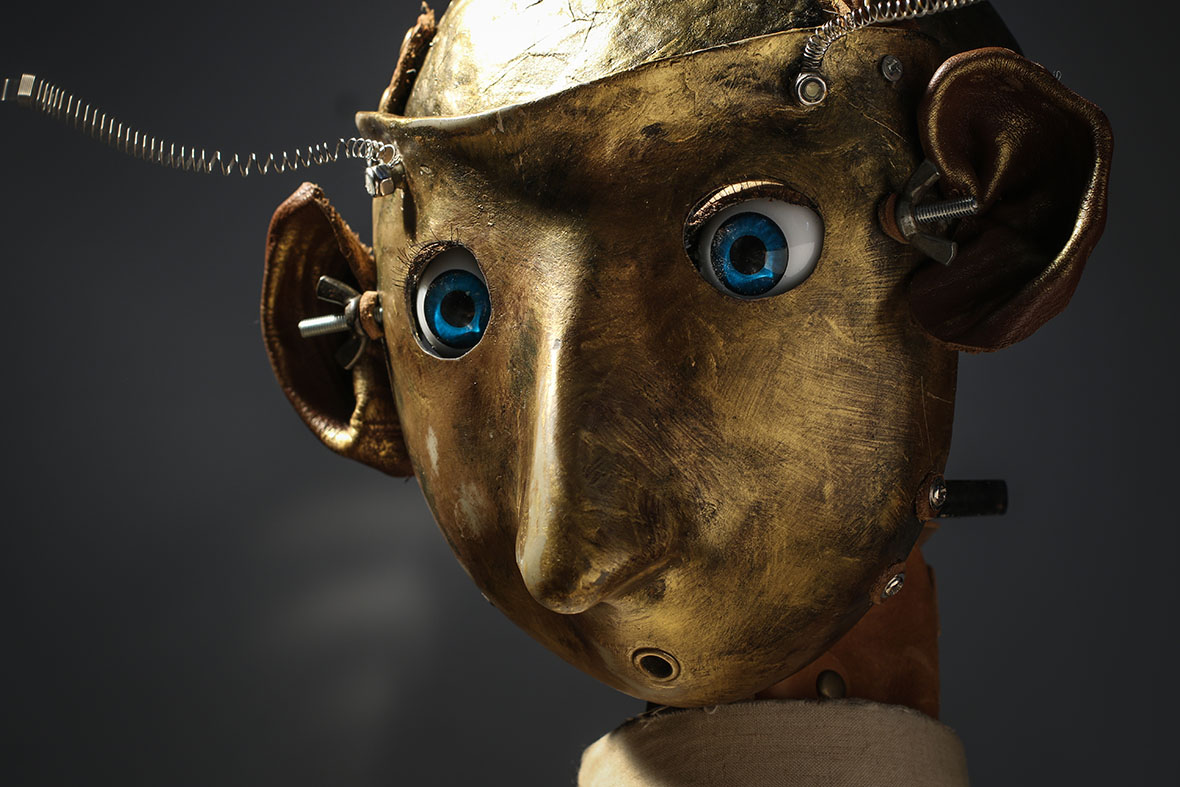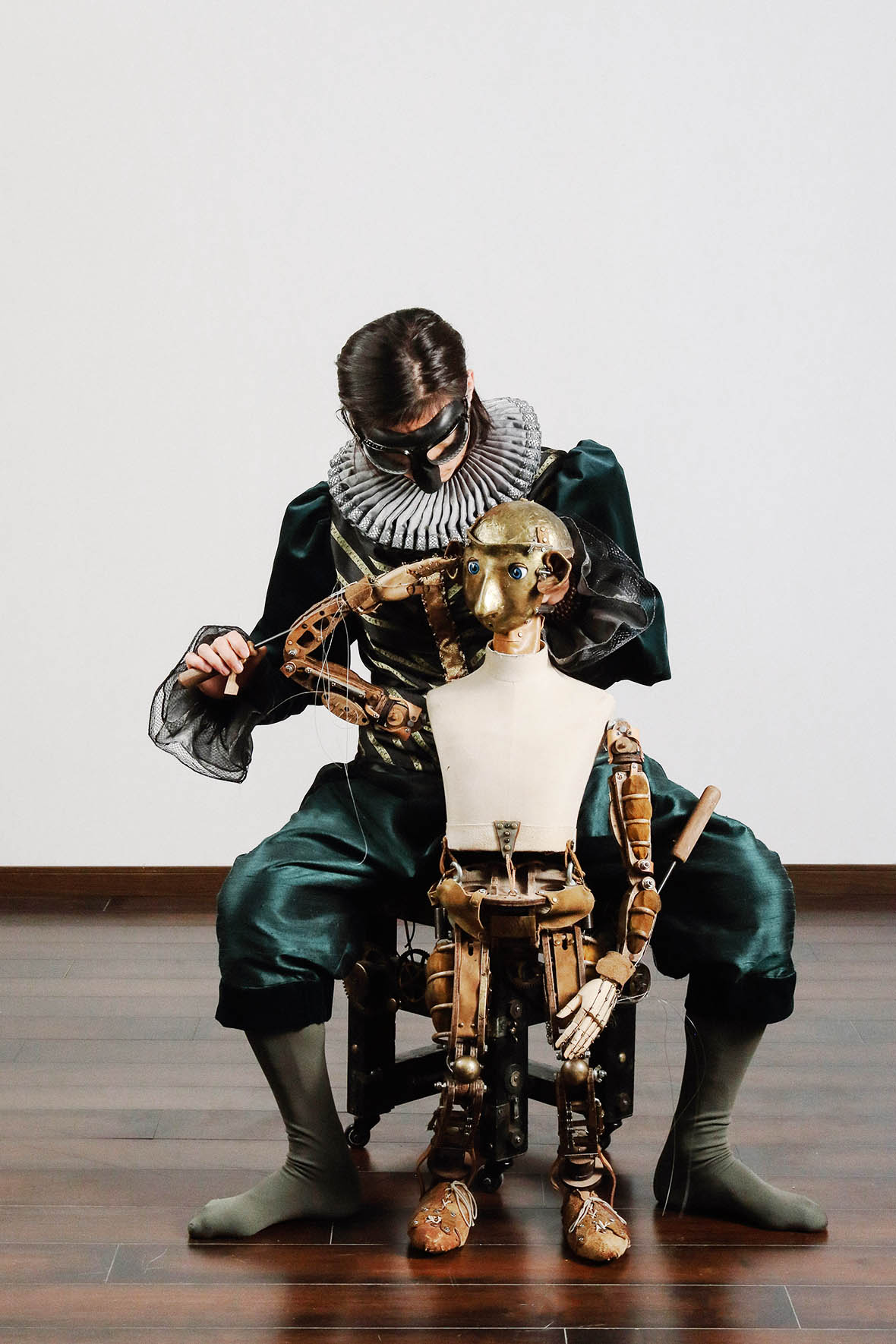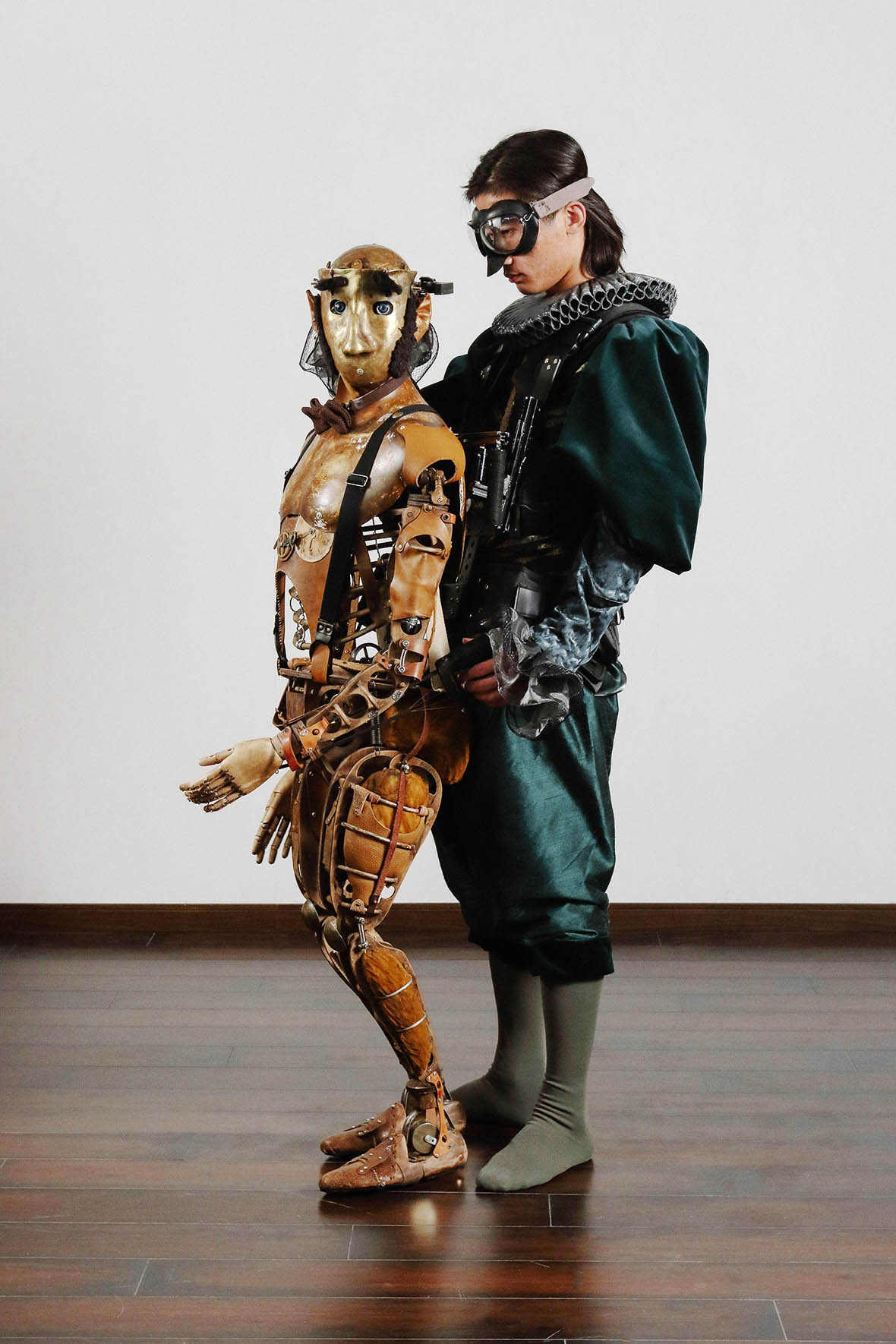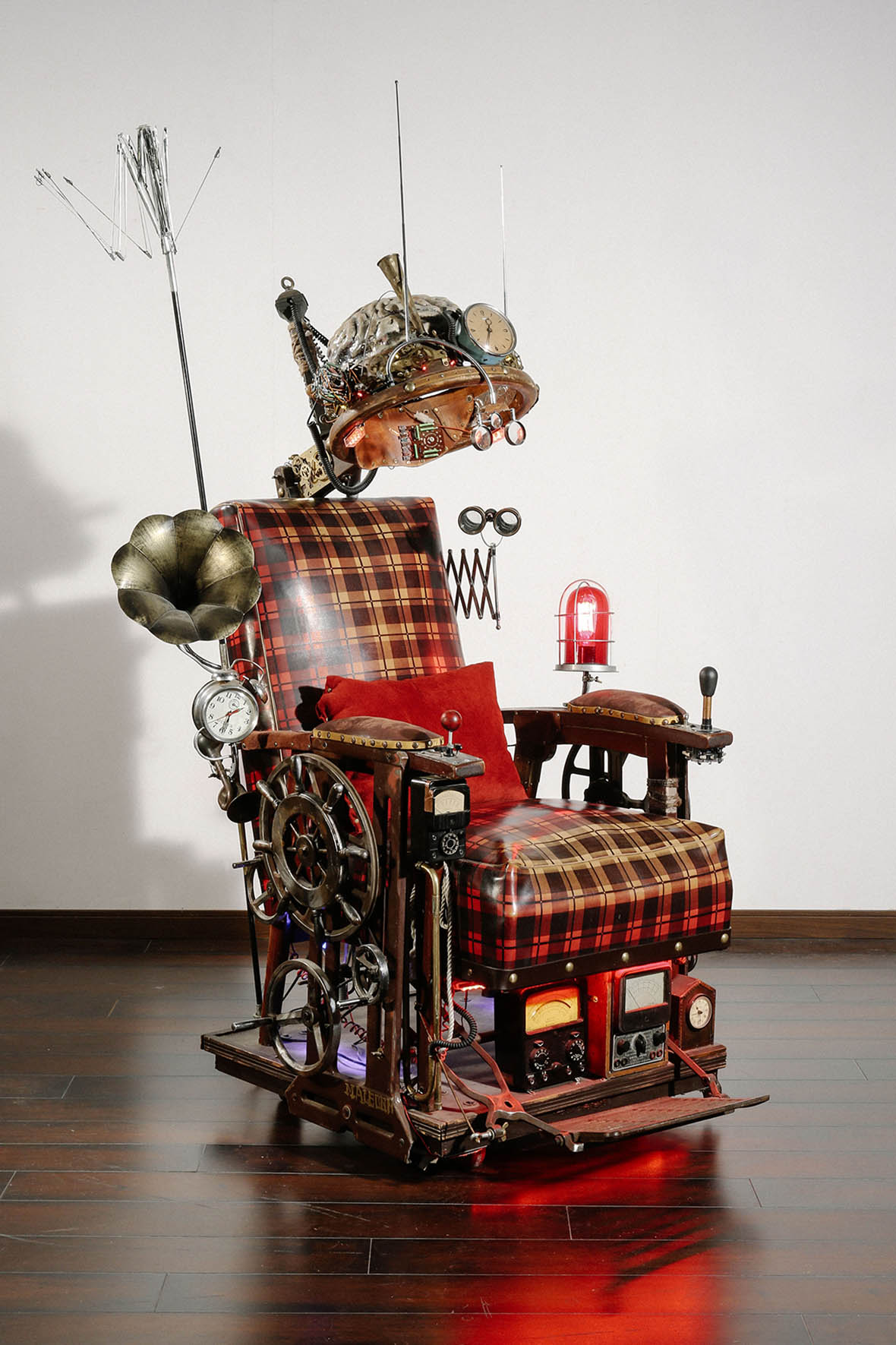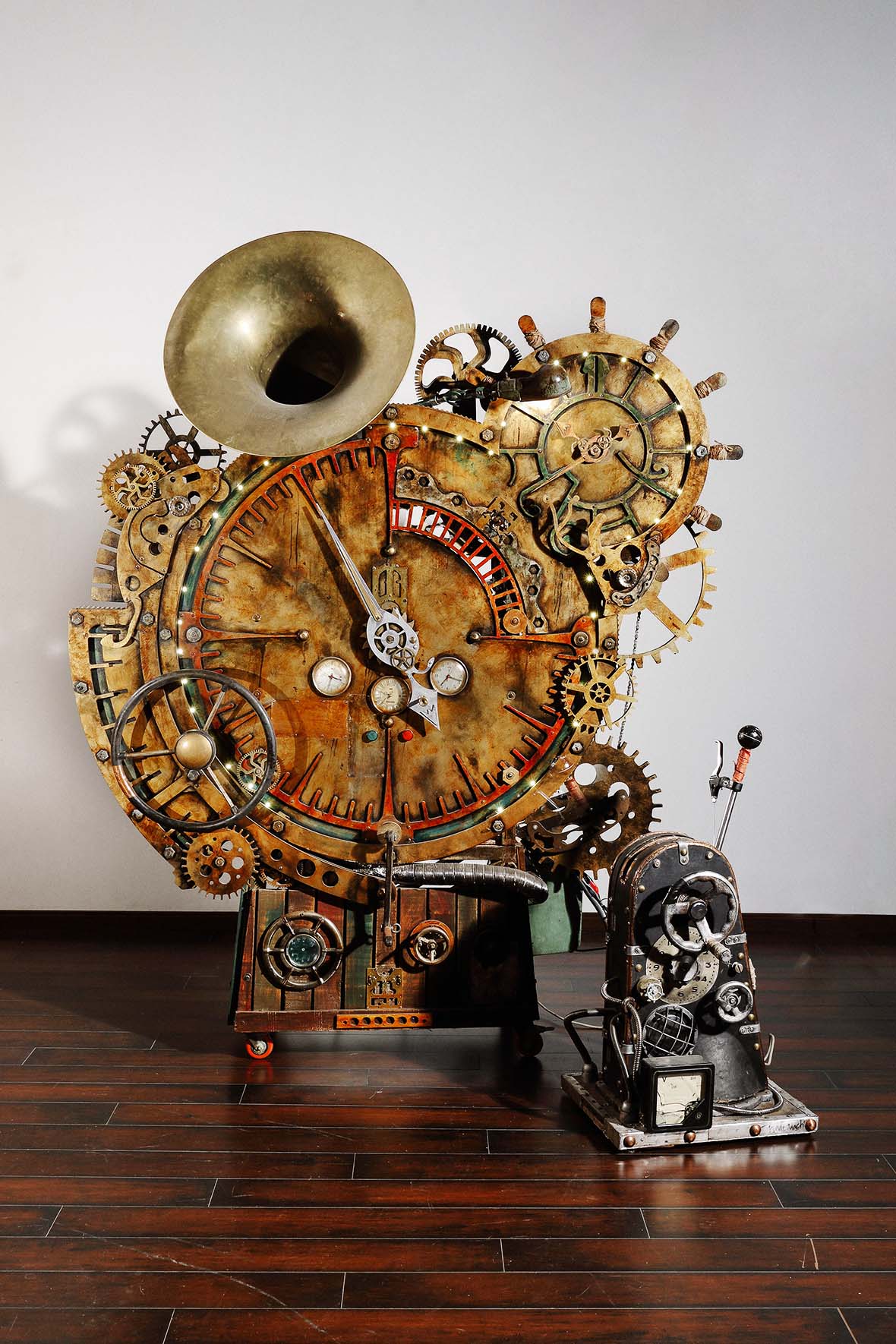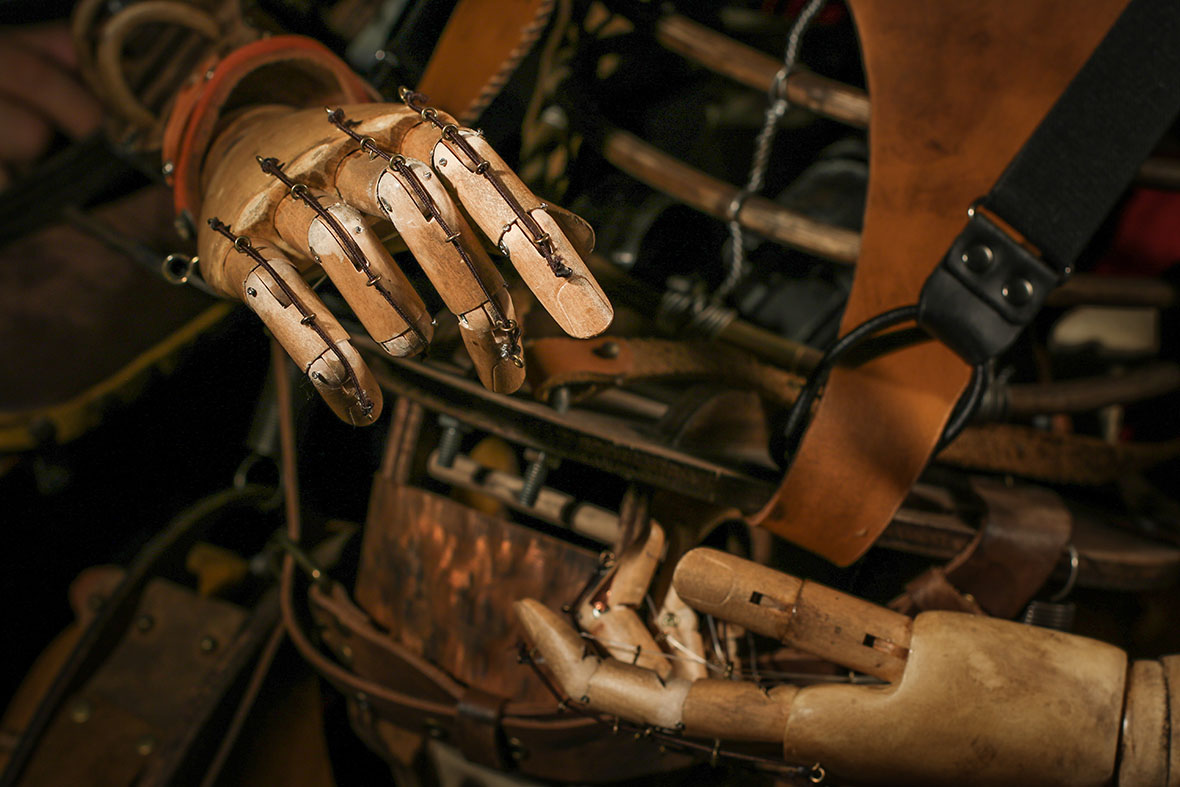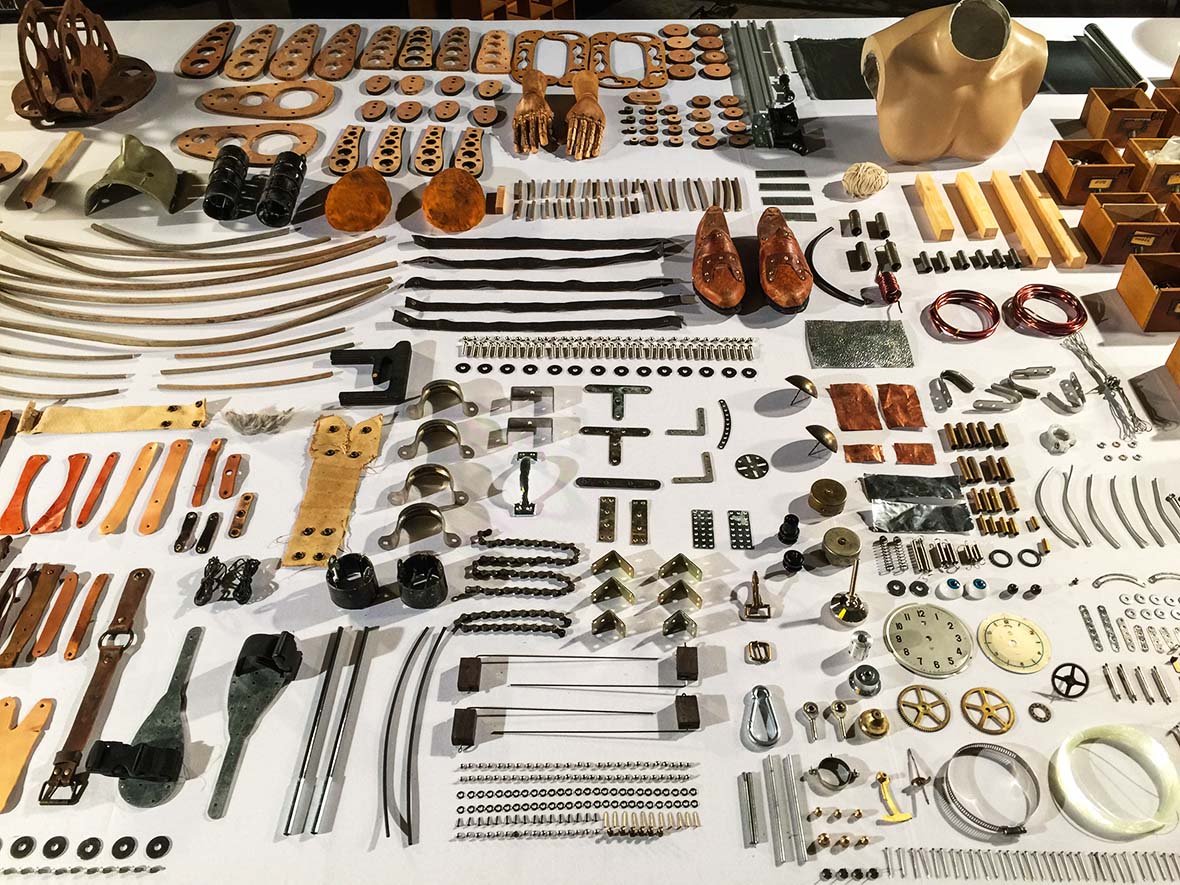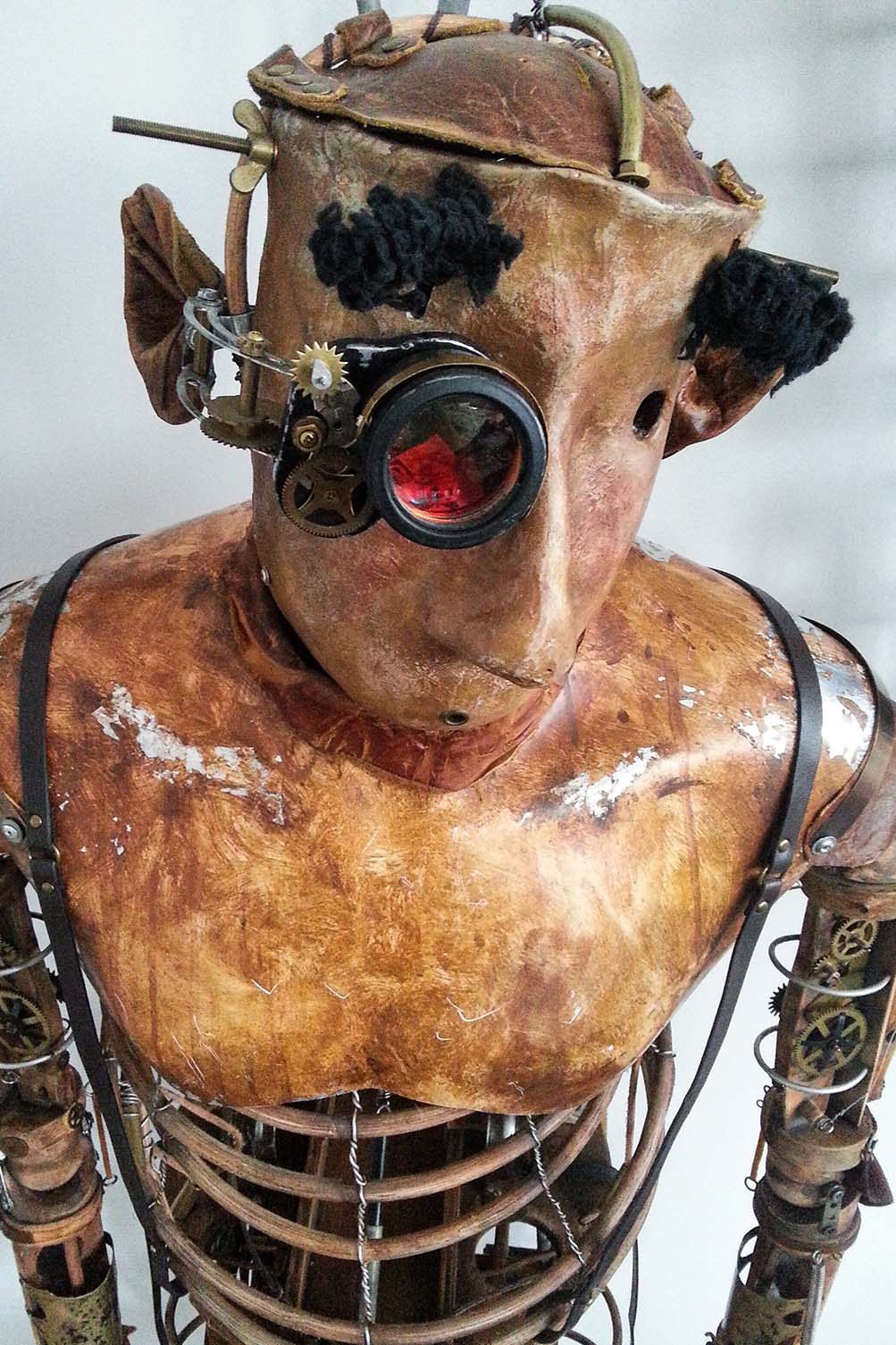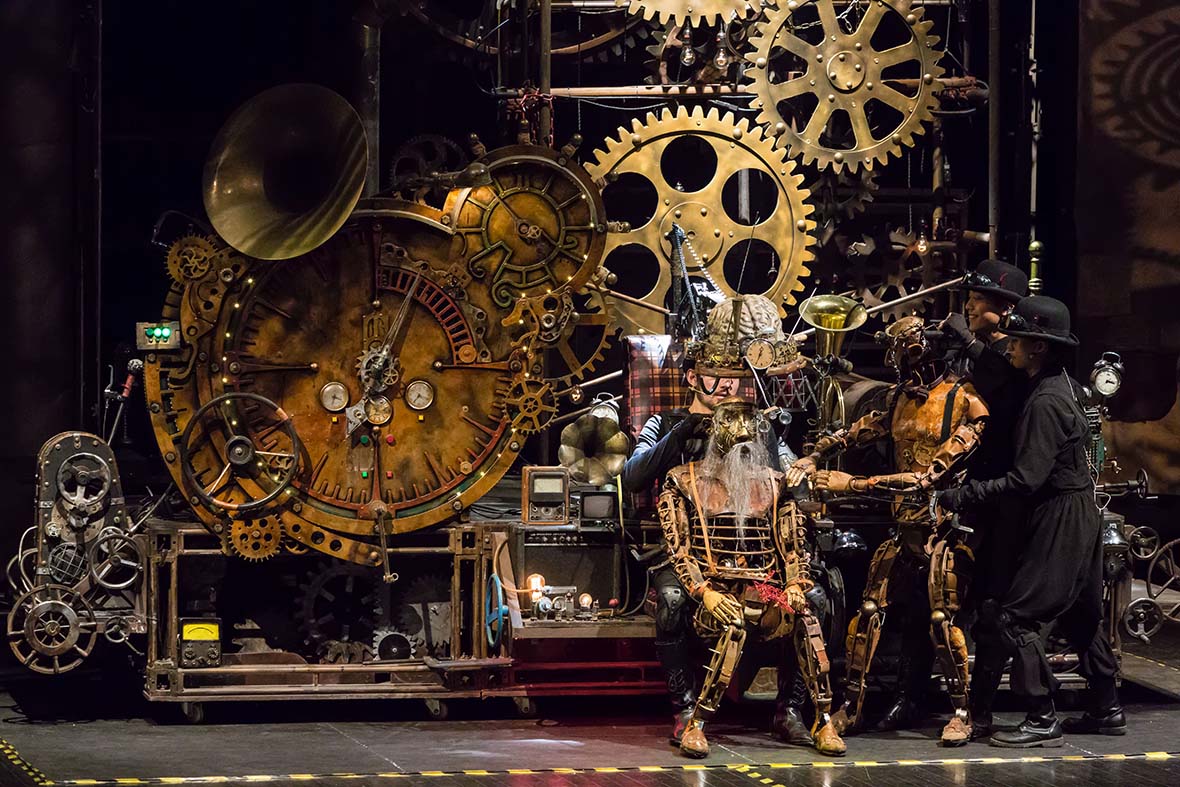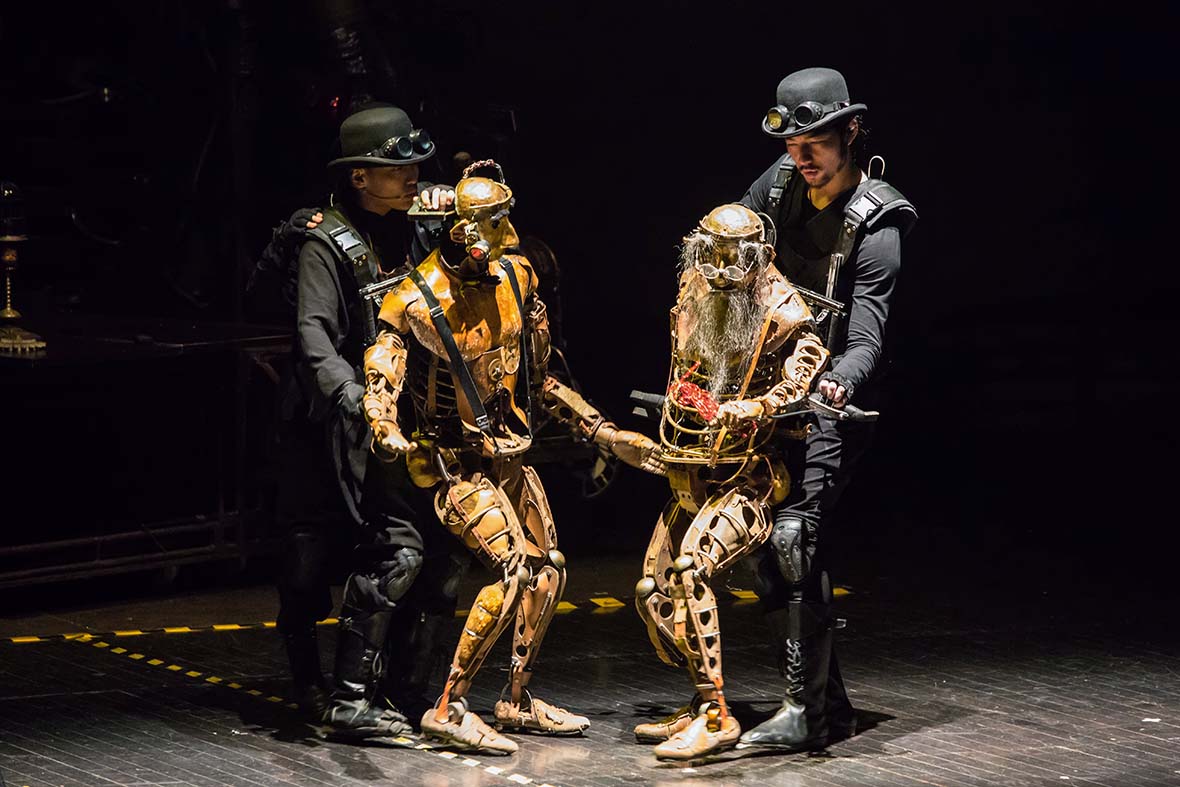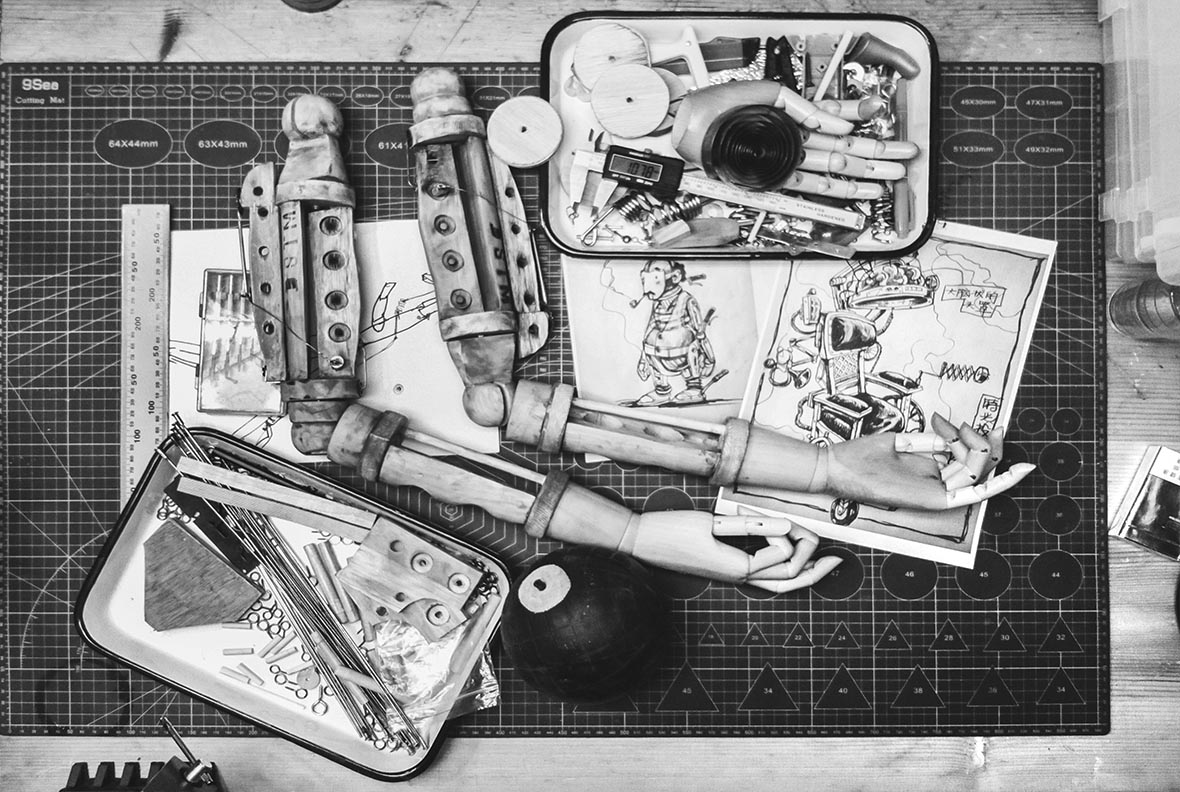无法观看?前往优酷
We caught up with Li Daiguo for an afternoon jam session, accompanied with vocals by Chacha and woven—perhaps—around the theme of sleep. Li’s music hovers on the edge of reality and nothingness, and listening to it you can’t tell, to paraphrase Chinese philosopher Zhuangzi, whether you’re dreaming you’re a butterfly, or whether you’re a butterfly dreaming you’re you. We’ve taken a part of the music and paired it with images, and we invite you to come along in this sonic reverie.
“Improvisation isn’t a genre, because it’s hard to determine what’s going to happen,” says Li. “Even if we repeat the performance, we’re ‘resuming’ it, not ‘replaying’ it, so it’s organic. You find a path in your own habits, a way in, and you have to protect it, build it up, so you can always get back, and then freely go on toward somewhere you never imagined.”
Who exactly is Li Daiguo?
First and foremost, a musician.
Born in the US, he first began studying Western classical instruments at the age of five. In his adolescent years, he explored instruments from other regions, and in college, he studied Chinese regional music and its cultural roots, while also studying twentieth-century literature and philosophy. Today, he’s become an established musician with experience in over 20 Eastern and Western instruments, in addition to beatboxing, Tuvan throat singing, and other vocal arts. For years he’s been going head-to-head with musicians from around the world, and this multifaceted exploration has led him to stop using labels to define himself. Whenever something resonates with him, he uses it to sow seeds, raise ripples. You never know where inspiration might come from,” he says. “Everything can influence me in some way.”
李带菓是谁?
音乐人是他的身份。
出生在美国,5 岁开始学习西方古典器乐,少年时接触了更多的地方器乐,到大学阶段便深入研习各地地域性音乐及其背后的历史文化,同时研究二十世纪文学和哲学。如今在二十多种东西方乐器和 beatbox、呼麦等人声中游弋,数年来与世界各地音乐人的“摩拳擦掌”,多维度的探索使得他摒弃了标签式的表象标准,他听到什么信息有共鸣,就拿那些来播下种子、掀起涟漪,“你不知道它来自哪里,因为所有东西都会对我产生影响。”
Listen to select tracks from Li Daiguo below / 点击即可试听李带菓的几首歌曲
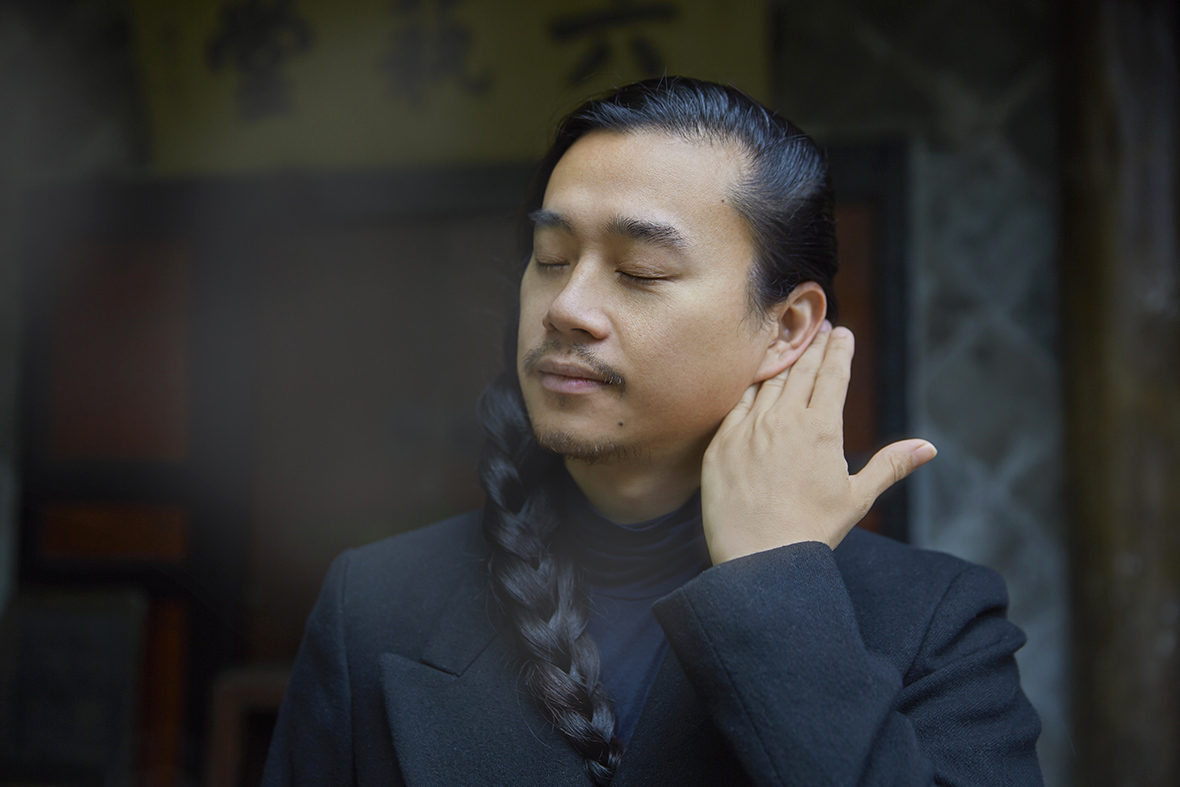
Side A: “Listen”
So what’s the best way to approach Li’s music?
“All kinds of theories could easily be applied to explain the ideas behind my music,” he says. “But they might not entirely be true. The truth is . . . I don’t know! I just do something that feels good from my heart to my brain to my body. I’ll stop there. I’m not going to oversell it.” In marketing, the pitch is usually better than the product, he quips, then gives a belly laugh.
“So a lot of things are there for no reason, or the reason lies in what they do. Too many words, too little thought. The things we want to grasp are often beyond our control, so it’s best to stop right at the edge of what you can feel but can’t understand. Experience it, hold on to your perception.”
It’s nearly impossible to shoehorn his music into a theory, of course. His music seems to touch the truth or essence, as though it were the natural sounds of notes or the inner connections between things. It approaches the dao, but you can’t grasp the truth itself.
Side A: “听”
到底,听他音乐的打开方式是什么?
“如果要套各种理论来解释我的音乐理念很容易,但可能不太真诚。真诚的应该是,我不知道呢!我就做一个让自己从心里到脑袋到身体都舒服的,我就停在那个里面,不再推销了。”各种名义的推销,噱头往往大于本质,李带菓直指出来,然后抱以率性地狂笑。
“所以很多东西,它没有理由,或者理由已经在它的行为里面。话太多,因为想法太少,那些想抓到的东西往往是超越我们控制范围的,所以不如停在你没办法知道的边界,但你感觉到了。去感受它,保持你的觉知。”
若以理论来强名于他的音乐,当然不太可能。他的音乐似乎在触摸真相或本质,犹如音律的自然发声、事物的内在联系……几近于道,而你无法抓住真相本身。
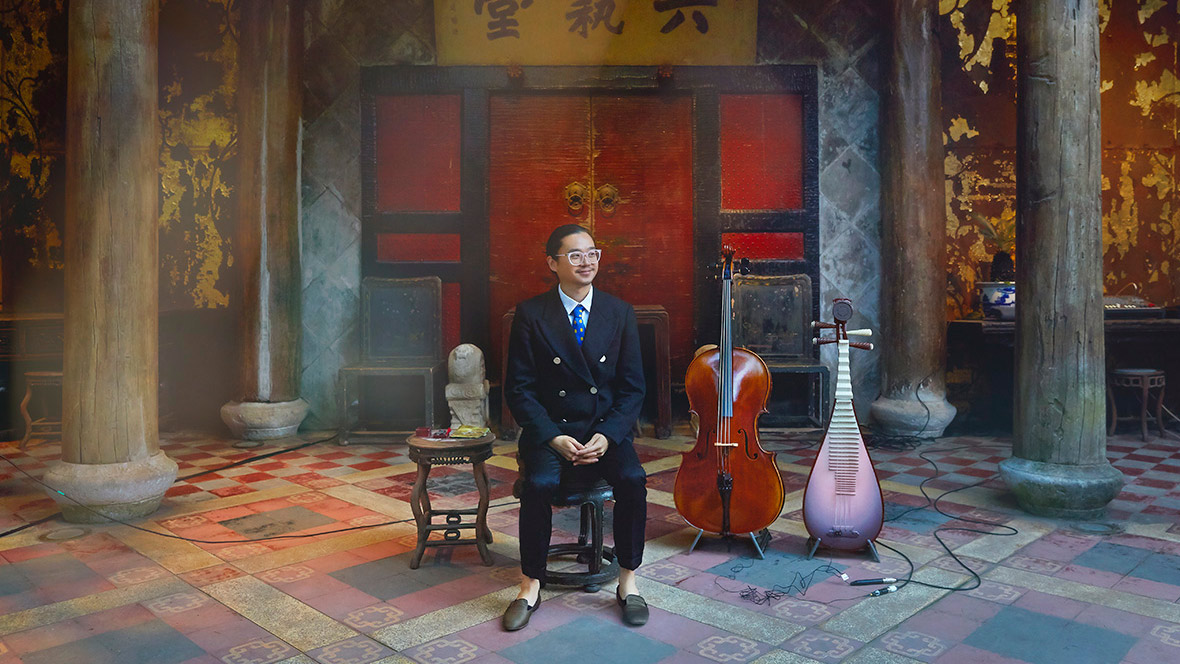
For performances, Li’s most frequently used instruments are the pipa, cello, and mbira (an African instrument that’s played by plucking it with a thumb). “When I use an instrument, I’ll think about the sound and vibrations it produces. I respect its original sound more because there’s a historical context there. It’s able to tap into a higher frequency. Someone asked me once, ‘That mbira instrument you use, why don’t you recreate something similar yourself? Or experiment with distortion pedals?’ The answer is simple. To me, the way the instrument was originally constructed is already close to perfection.”
李带菓最常用琵琶、大提琴和 Mbira(津巴布韦手指琴)来弹奏和创作,“在乐器使用上,我会从它的声音和振动来考虑,我更尊重它的原生音乐,因为它有那个历史,它能接通能量的概率更高。有人问我,你那个 Mbira 的非洲乐器,怎么不自己创作?或者加效果器做各种实验?因为对我来说,它那个系统和乐器的结合已几近完美。”
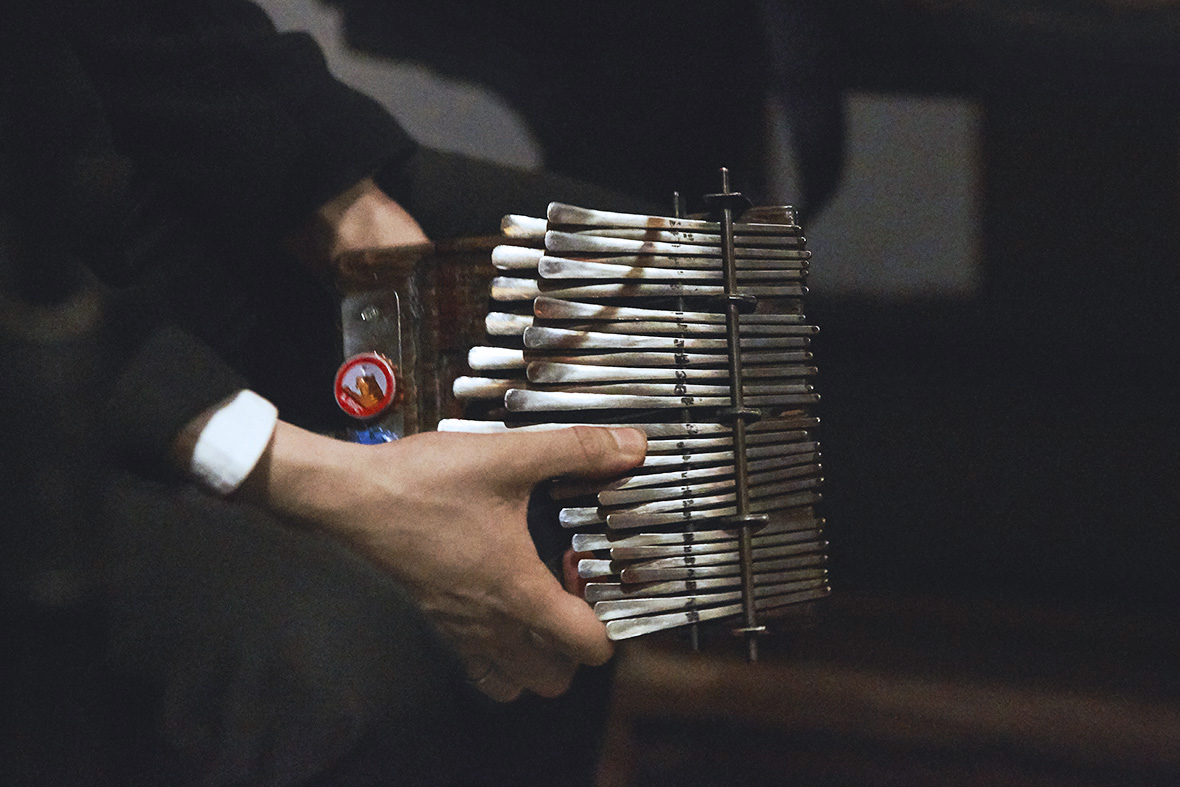
He adds, “So why do I perform with the cello and pipa? It’s because they’re fairly common instruments that many people are used to hearing here. From silk strings to steel strings, there’s so much potential in these instruments themselves, but frankly, old songs aren’t as compelling anymore. I spent much of my youth with these instruments, understanding their aesthetics, so I’d say I’ve become fluent in that language. But the mbira is a more narrowly regional instrument. It’s evolved in its own way. If in the future, I have the chance to express myself within that realm, I’ll let it happen. If not, I won’t fake it just to make something new.”
他又补充,“那为什么会用琵琶、大提琴创作?因为它们在地域范围内已经传播很广,丝弦也成了钢弦,这些乐器本身也有更多的可能性,老曲子的整个编曲没有那么大吸引力了。并且我从小在那个器乐的体系里,消化了它的审美,知道怎么用它的语言说话。但是 Mbira 地域性更窄,那个地区有他们慢慢的进化方式。但如果以后我能自然地在它的体系里说自己的话,那我也会允许它发生,如果没有,也不会为了‘新’去假装‘新’。”
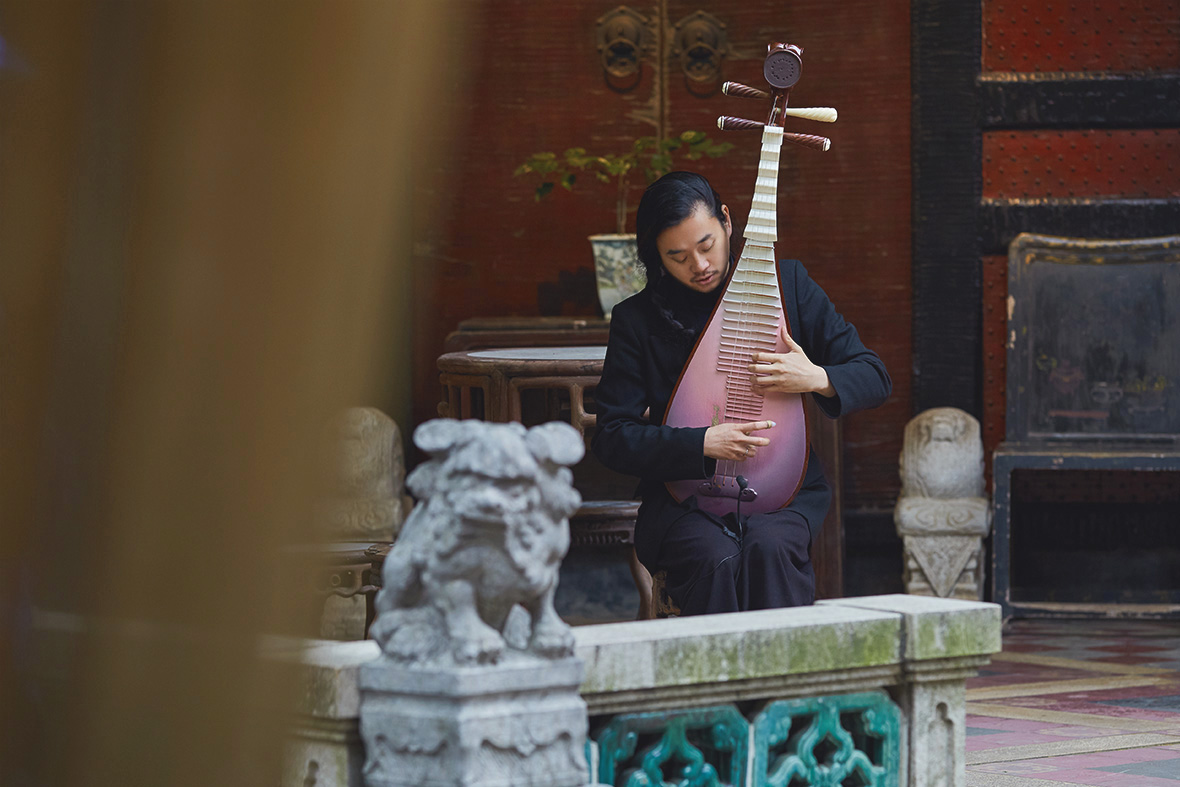
Li’s wide-ranging insight into blending Chinese and Western culture is what allows him to experiment and innovate with musical instruments. “The real fusion is when music’s different souls are combined. There’s no incompatibility between past and present, because everything flows in one stream. As long as this fusion is still happening, then it’s just the evolution of a traditional form.”
“Those who aren’t willing to evolve have lost their way. Same for those who blindly pursue change, changing their posture and their performance. Then they add some drums, mix the traditional and the Western, the old and the new—their environment has warped their sensibilities. They’ve lost their roots, forgotten what’s most true. Perhaps this connection to roots is a sort of instinct, but if you truly seize its essence, you can summon its spirit.”
他对中西方文化融合的不拘一格的洞察力,的确带来了器乐上的更多探索与创新,“真正的混搭,混的是音乐的灵魂。并不存在过去与现在不相容,因为都在一条河里流淌,只要是这个东西还在发生,它就是一个传统的进化。”
“不愿意进化,是因为他们迷路了。或者有些人盲目地求变,变着姿势演奏,然后动次打次,传统加西方、老加新,环境的洗脑影响了审美,他们丢了根,忘了最真诚的东西。有可能这种根源性的链接是一种直觉,但如果是真的抓到了它的内在,那么你就可以把那个鬼叫出来。”
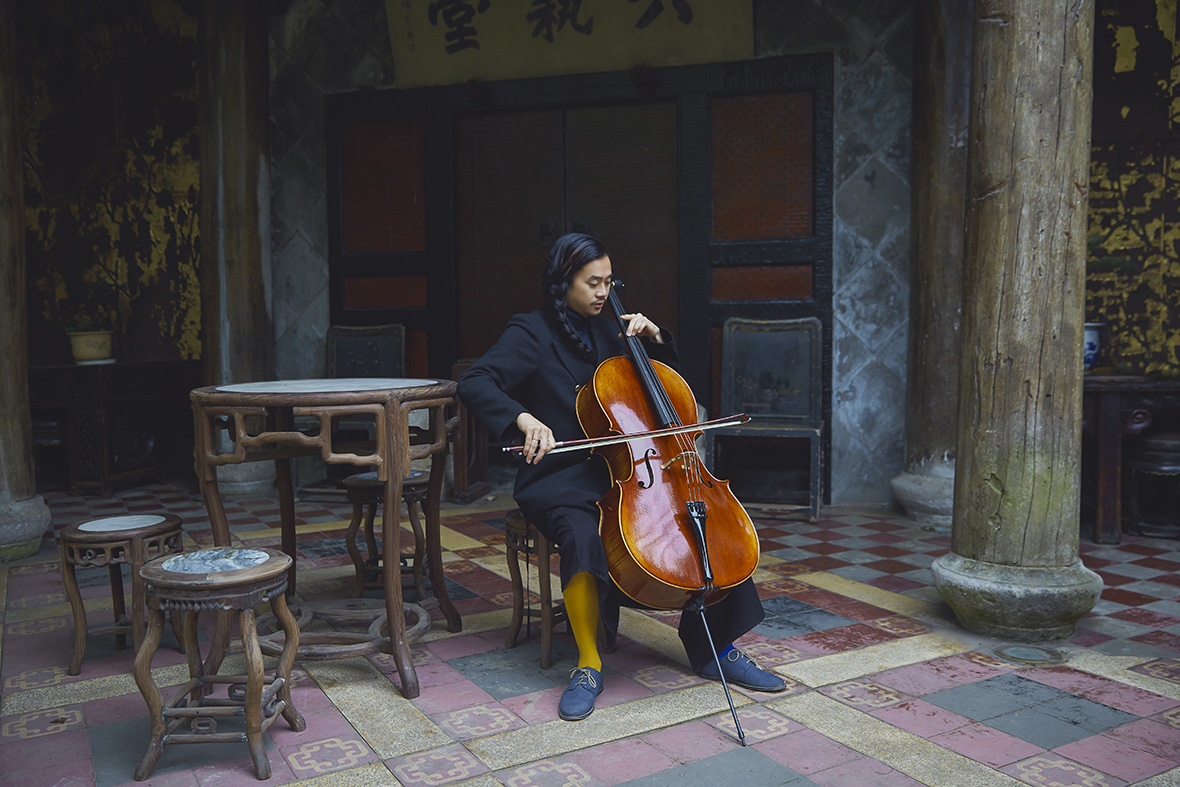
As of late, Li’s music sounds very electronic. “These are all acoustic instruments,” he clarifies. “All I’m doing is amplifying certain frequencies of their existing sound. It sounds like a synthesizer. A lot of people can’t believe the sound is being plucked from a string since it sounds like a group of instruments. But the instrument’s original sounds are all there, layered and nuanced. If you manipulate sound with acoustic instruments, you can be more flexible and create different sounds. The instrument shouldn’t be something you’re dependent on, but rather it should be a tool that represents and serves you.”
最近他又在做些听上去很电子的东西,“那些都是原声乐器,我只做了一件事,就是放大已经存在的声音的某个频率,听起来就像一个合成器。他们不相信那是一根弦弹出来的,感觉是一大堆乐器,其实那些原声状态都在,每一秒都和你的身体有共振,听起来更多微妙的层次。你用原声乐器去控制的话,更有选择更自由,也会有更多内容在那里面。是它在代表你、为你服务,而不是去依赖它。”
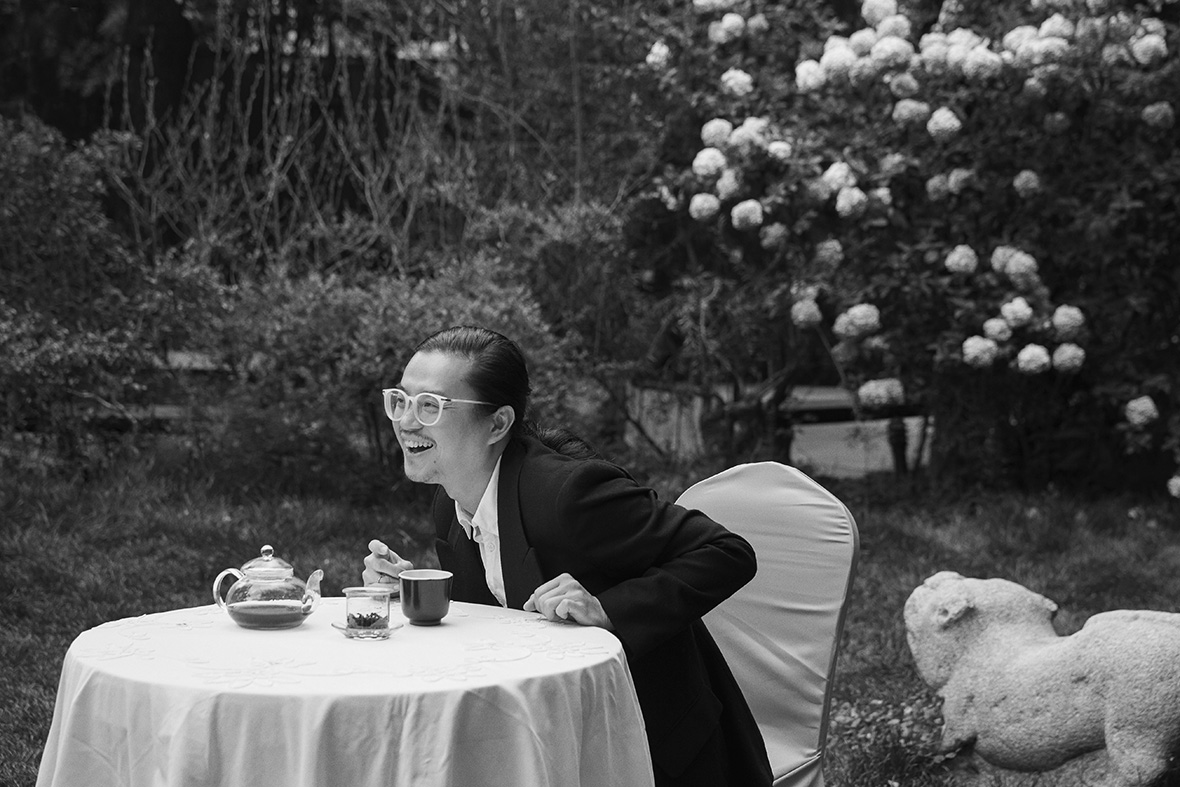
Side B: “Look”
What’s this kind of person like in everyday life?
As we chatted face to face over the table in the backyard of a vegetarian restaurant, his waist-length hair, sometimes gathered with a pin in a topknot, hung around his neck in a braid. The light breeze sprinkled parasol leaves onto our table and dishes. He brushed off the leaves and continued to eat with relish. “It doesn’t matter where you’re from. Everyone loves Chinese food,” Li surmised. “But 90% of the actual cuisine, most people probably can’t stomach. Many people have a limited palette.”
Side B: “视”
这样一个人,在日常中会是什么样子呢?
我们在功德林后院的饭桌上面对面聊着,他及腰的长发盘在脑后、插上发簪,有时也会编起麻花辫绕在脖子上。风吹散的梧桐絮飘落在饭菜上,他撇一撇继续大口吃饭,“各种肤色的人,基本上都喜欢吃中国菜,也百分之九十吃不惯,他们的味觉比较窄。”
Curiously enough, Li—despite being a food lover—has actually been a vegetarian since he was 19. He believes we’re all animals. “People refuse to eat cats or dogs in many countries, but they’ll happily eat beef, pork, or poultry. They don’t view these things as related. But if you take the time to befriend a cow or a pig, you’ll discover the emotions they experience are the same emotions we experience. Their actions and feelings are similar enough that we shouldn’t be seeing them as only meat. I’m not a vegetarian because of dietary restrictions or an opposition to killing. It’s because these animals are products as soon as they’re born. That’s pretty bad.”
我却是好奇那么爱吃的一个人,却从 19 岁就开始奉行素食,他认为我们都是动物,“比如说很多国家的人,他不吃猫狗,但他会吃牛和猪、吃鸭吃鸡,他不会把那些当成有关系的东西,但如果你去试一下,跟一头牛或猪有感情,然后反射一下人与人之间的那些感情、各种行为,已经够接近到我们没必要去这样分。我吃素不是吃或者杀的问题,是因为从它们一存在就是一个商品,这个不是特别好。”
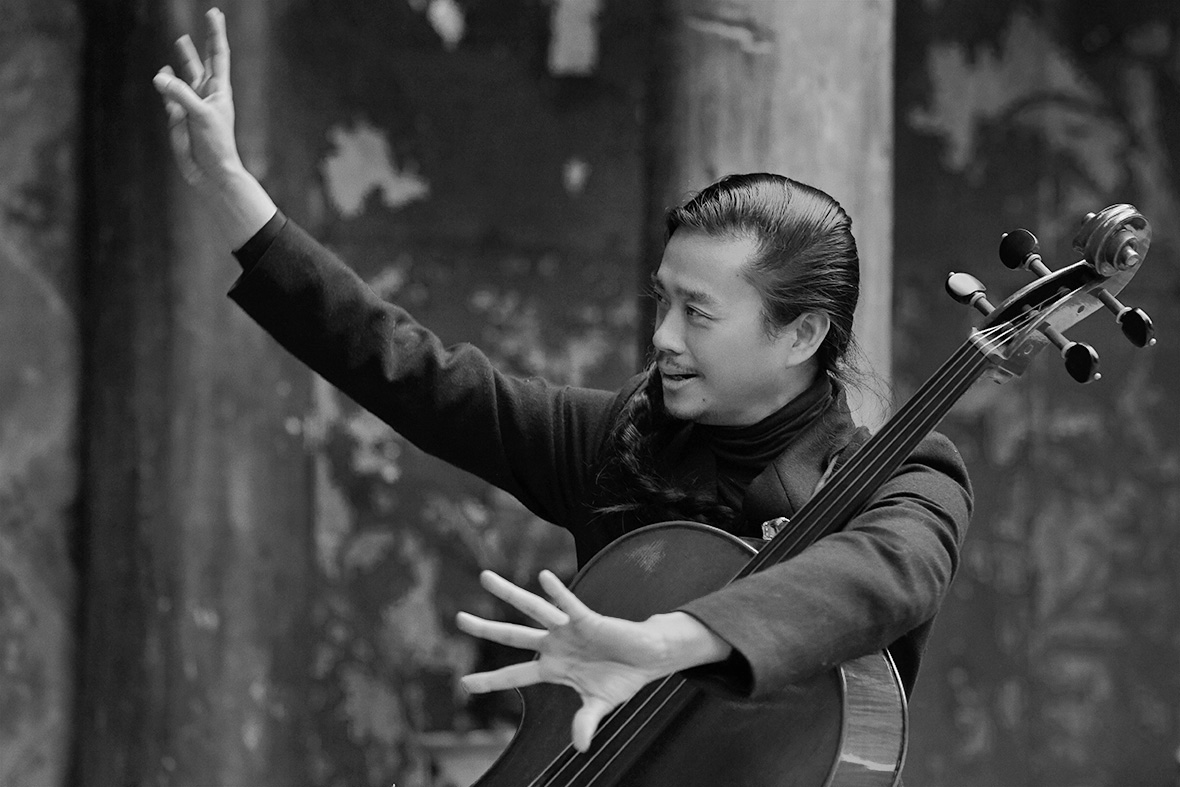
As we walked along the sidewalk after our meal, he carried his pipa on his back and lugged his cello behind him. Craning his neck to speak, he stumbled on a step and nearly took a tumble, but he recovered his balance with a series of comedically theatrical movements. Having spent the afternoon together, I was already quite familiar with his silliness, but the absurdity of the maneuver still left me laughing. “You know Charlie Chaplin?” he asked. “You could say that he’s a pessimist. But he wanted to make the world a better place with his comedy. I’m the same way. I know all of his choreographed movements come from the heart. I want to be the Charlie Chaplin of music. It’s my dream,” he said with a decisive glint in his eyes.
茶余饭后的路上,他背着琵琶、拖着提琴,顾着讲话就没留意人行道的上下台阶,绊了个踉跄,刚反应过来就顺势做起戏剧化的夸张肢体动作。其实聊了那么会儿,我们已在一个频道里见怪不怪,但仍旧被逗乐了,他讲:“你知道卓别林,你也许可以说他是一个悲观主义者,但他通过他的喜剧是想做些好事情,我也是。他所有的那些动作那些编剧,我知道他是用什么心在做,我跟他是一样的,我要做各种音乐卓别林,这是我的梦想。”李带菓尤其肯定的闪着光芒在说。
Later on, as I combed through all of the audio and video footage, I noticed that he would often approach the camera or the microphone to add a high-pitched “Ah!” as a coda to something he’d said. Li’s playful quirkiness, mischievous tendencies, and contagious charm have won over those who’ve been fortunate enough to get to know him.
In the past, Li used to be fond of words and language, but then he grew tired of writing and concluded that true expression didn’t need very much actual language—and that language itself could be another musical form. So he then blended words into his music, either through singing, recitation, speech, laughing and crying, or in duets with one instrument and one voice, telling a story, singing a story in the music. He also began making film shorts and theater pieces.”
在后期整理时,我发现在录音或影像的收尾,他常常会凑近镜头或者话筒发一声短促音高的“啊”作为结束。这些小细节让见过李带菓的人,也大多会被他的调皮、他的趣味、乃至他的妖娆所感染。
他以前很喜欢语言和文字,后来写多了,就觉得真实的表达不需要那么多实际的语言,它也可以是另外一种音乐表现形式。于是他接下来会把词融进他的音乐里,从好好唱,到朗诵、说话、哭笑,或者一个乐器加一个人,在音乐里讲故事、唱故事。同时,他也开始做小短片和剧目。
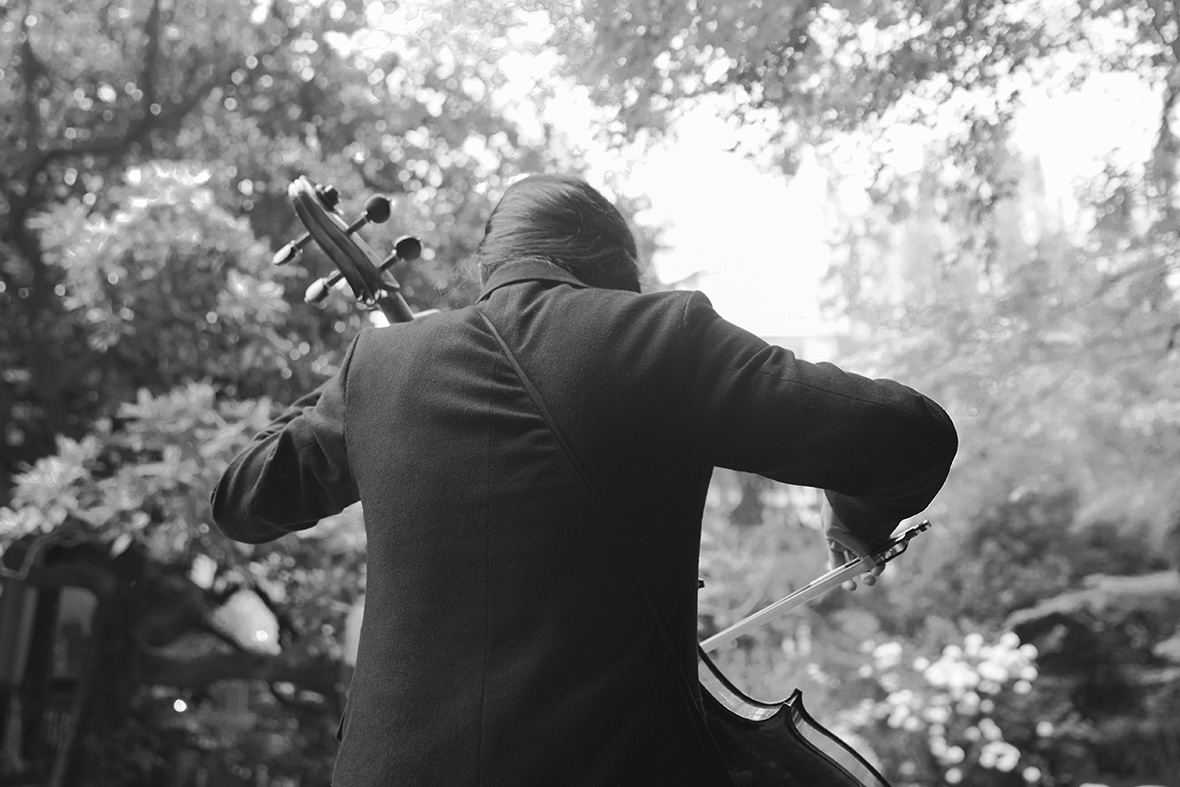
Li currently lives in Dali, China, a town known for its beautiful mountains, clouds, and scenery. There he can enjoy the brilliant splendor of the great outdoors.
In the natural world, all sound is improvised. What we call music is adding to or subtracting from these existing vibrations.
如今李带菓居住在大理,那里的山、云、日月都很美,可以在大太阳底下奔跑。
声音在自然声场里即兴涌动,我们对振动传播的信息做了加减法,便成了那个被叫做音乐的存在。

“Nobody can create music that resonates with everyone, everywhere, at all times,” he says. “Only the sounds of nature hold this universal appeal: the sounds of cascading waterfalls, chirping birds, rolling ocean waves, and the pitter-patter of rain. In terms of transmission strength, nature is definitely the most powerful. If you want truly stereoscopic sound, you might as well go into the wilderness and take in the sounds rather than purchase a bunch of fancy equipment. It’s extremely pure. Your mood or mental state can only affect how much of that beauty you can take in. Or from another perspective, the cars outside, the fruit vendor’s call—if you can listen to how they come together, that’s also a kind of natural beauty. Or again, if you’re not influenced by your body, by material values, but can tune in directly to the universe, that’s also a way. In that case, music and art are unnecessary—they’re superfluous, they become self-expression. So I’m just a bird, and all I’m doing is chirping.”
“没有人可以做出让所有人在所有地区所有时代都接受的音乐,只有瀑布、鸟叫、大海、雨声,可以让人应该都会产生共鸣。从传播能量的角度来说,肯定是大自然提供的是最有力的。你搞立体声,搞各种声音装置什么,不如去森林里面,没办法,那个东西是非常纯粹的,那个根是在声音里面,你的状态和情绪只会影响你能吸收那个美的多少。换个角度来讲,外面的车、卖水果的吆喝,如果你能听到他们结合的一个点,那也是他们完成的一个自然美。再或者如果你不受五脏六腑、物质价值体系的影响,而是直接从宇宙里接收信息,那也是一种方式。那样说的话,是不是什么音乐什么艺术都是不需要了,都是多余的,都是为了自我表达。所以我也只是一只鸟,我也在叫而已。”
Music is a journey for your senses, it’s a vessel, a medium that allows you to visit unknown realms. It’s something that allows you to tune into internal and external experiences. Music is indescribable.
“In a sense, music is a conversation with another universe,” Li says. “One that goes beyond all the small talk of our daily lives.”
音乐是当下的感官旅行,是一个载体、一个渠道,停在不知的边界,引你进入更内外的体验,不可描述。
“那是在另一个世界的交谈,在某种意义上,胜过今日我们听到的许多交谈。”

Website: lidaiguo.com
Xiami: ~/lidaiguo
Photographer & Contributor: Chan Qu
Videographers: Anais Siab, Damien Louise
Special Thanks to ChaCha & Yongfoo Elite
网站: lidaiguo.com
虾米: ~/lidaiguo
图片摄影师与供稿人: Chan Qu
视频摄影师: Anais Siab, Damien Louise
特别鸣谢 ChaCha 与雍福会

